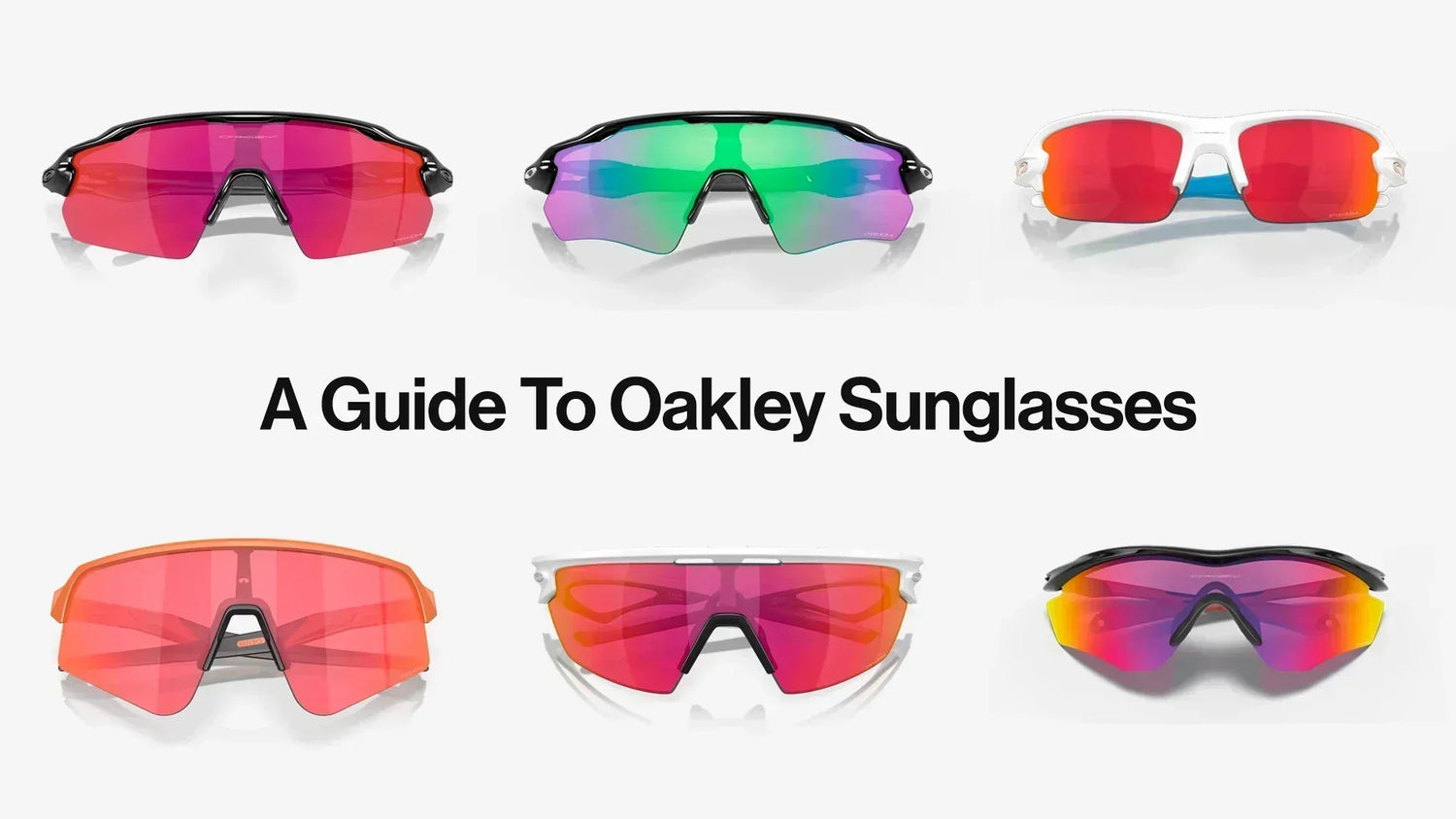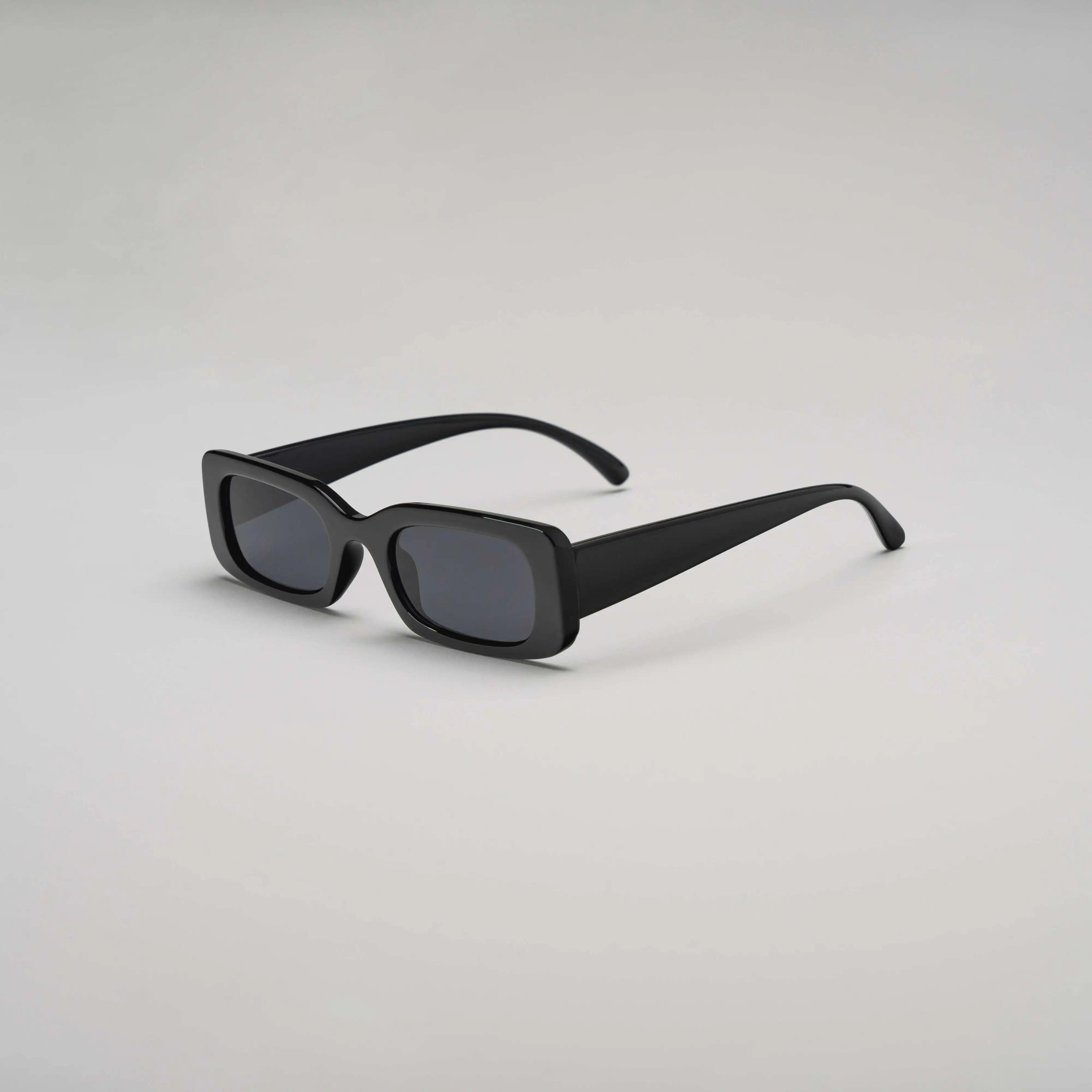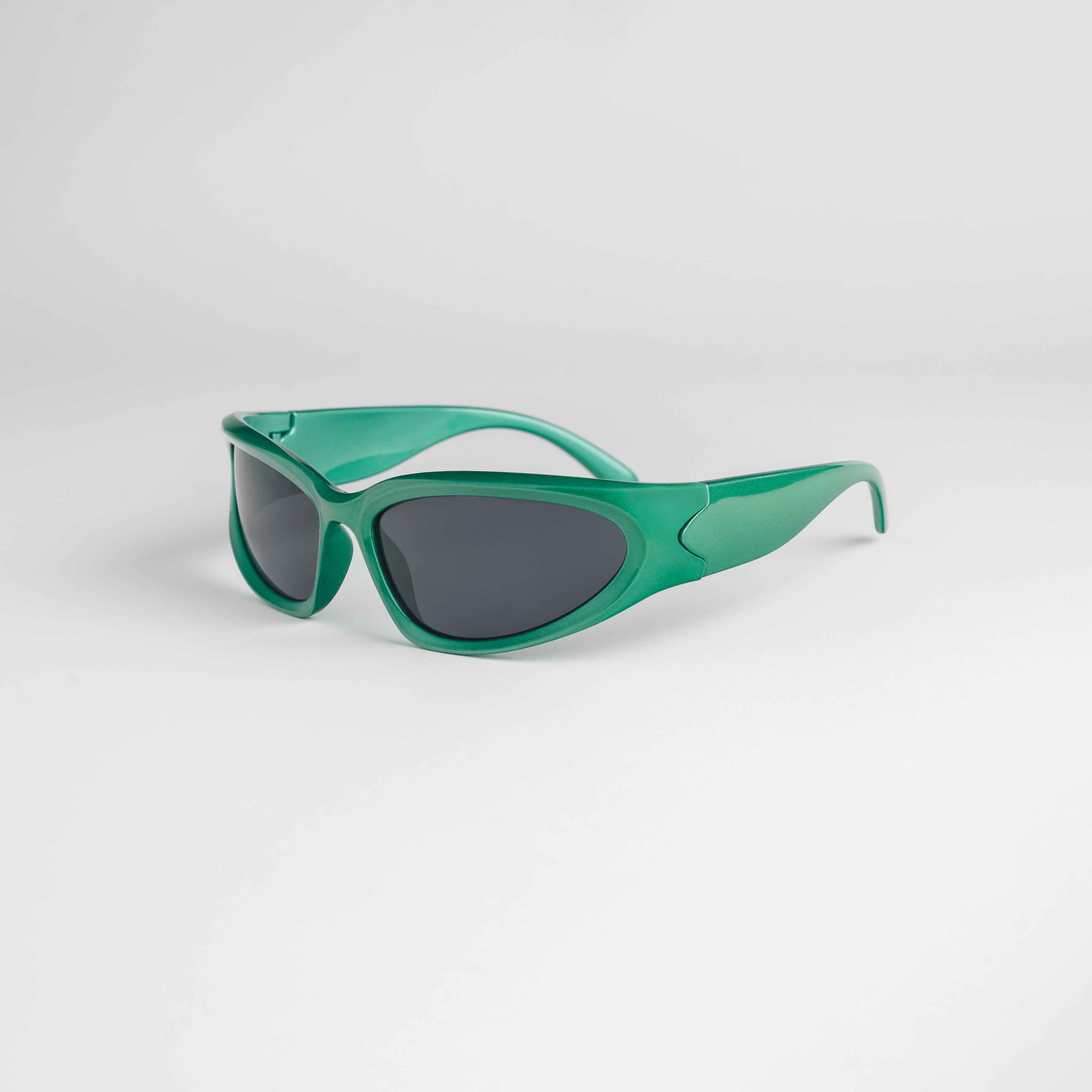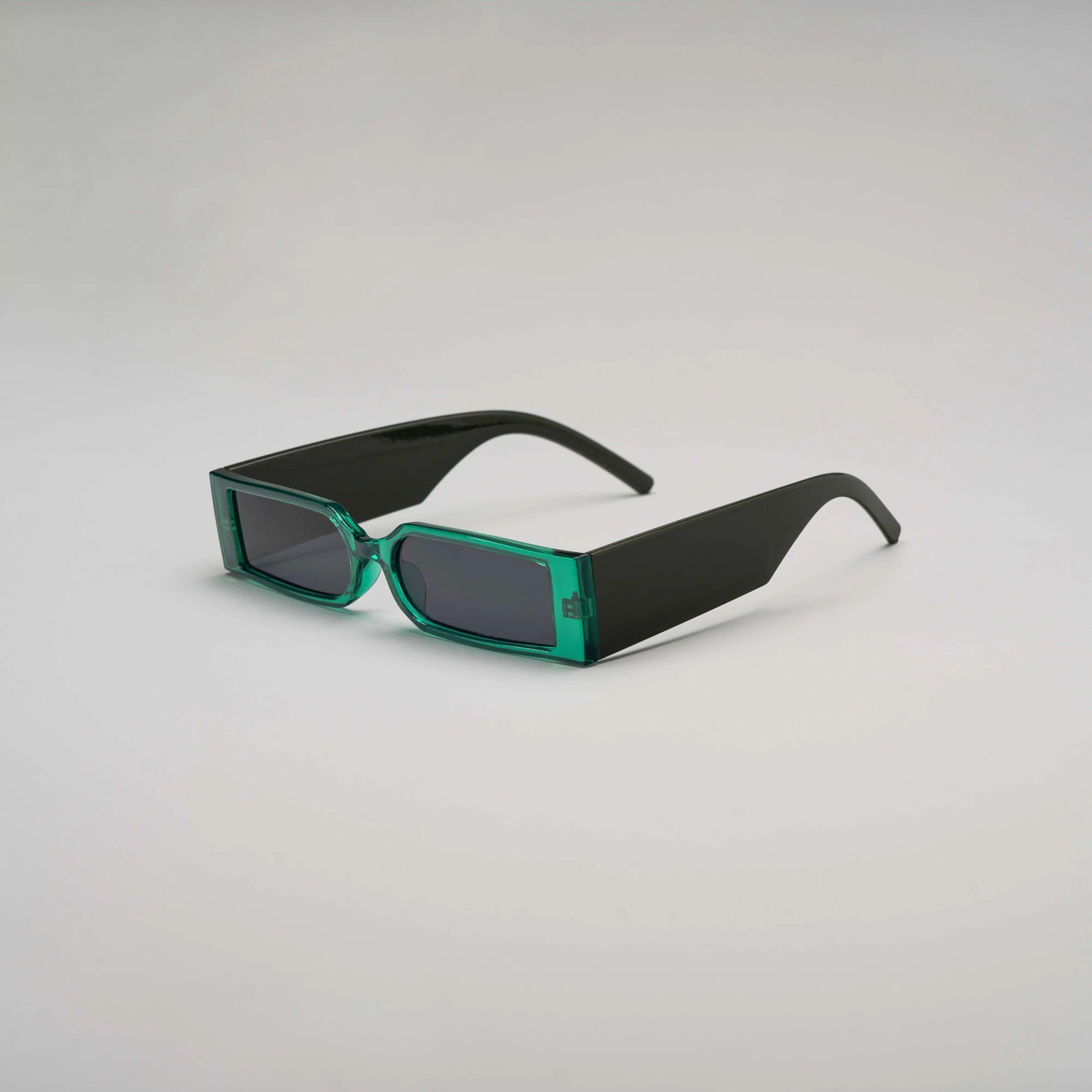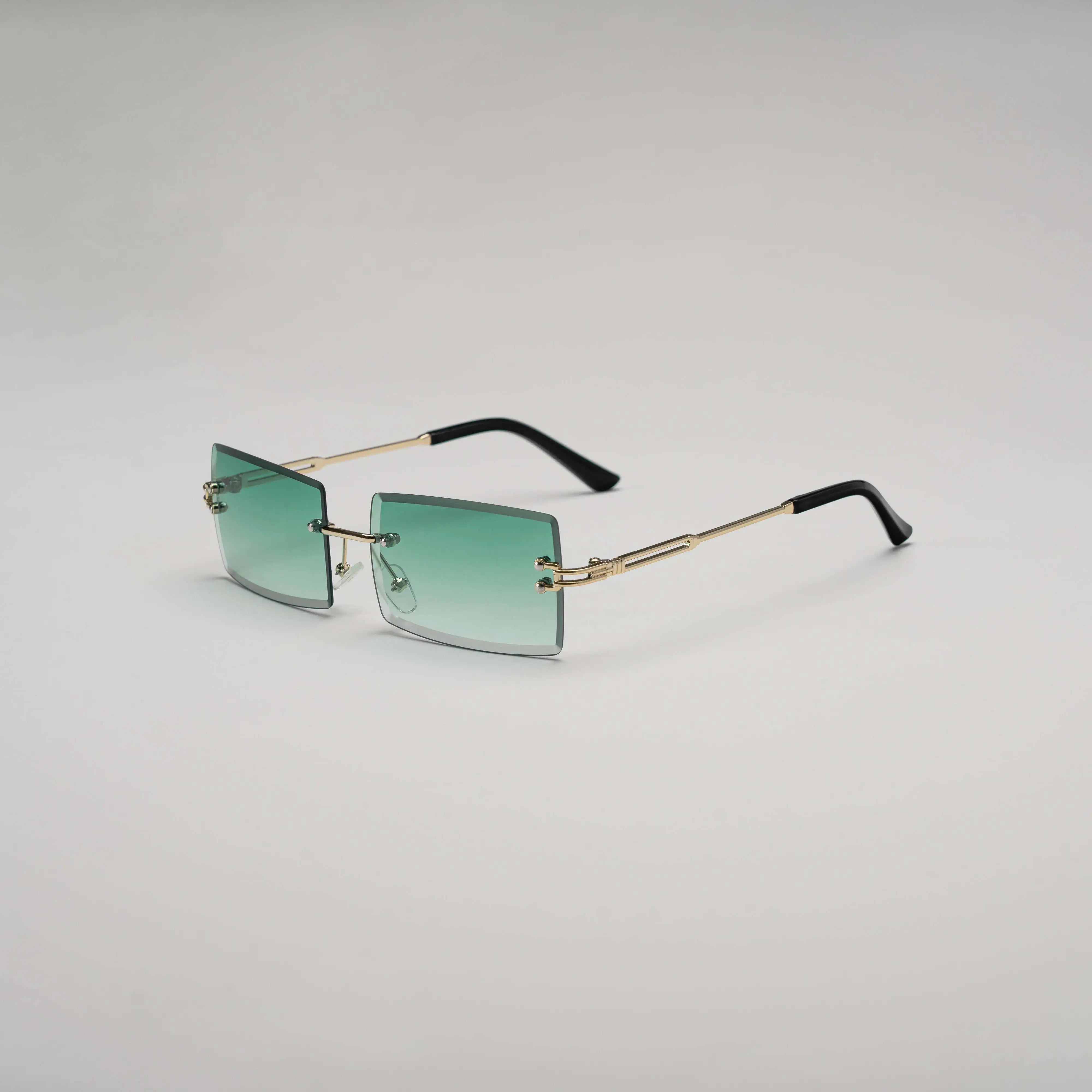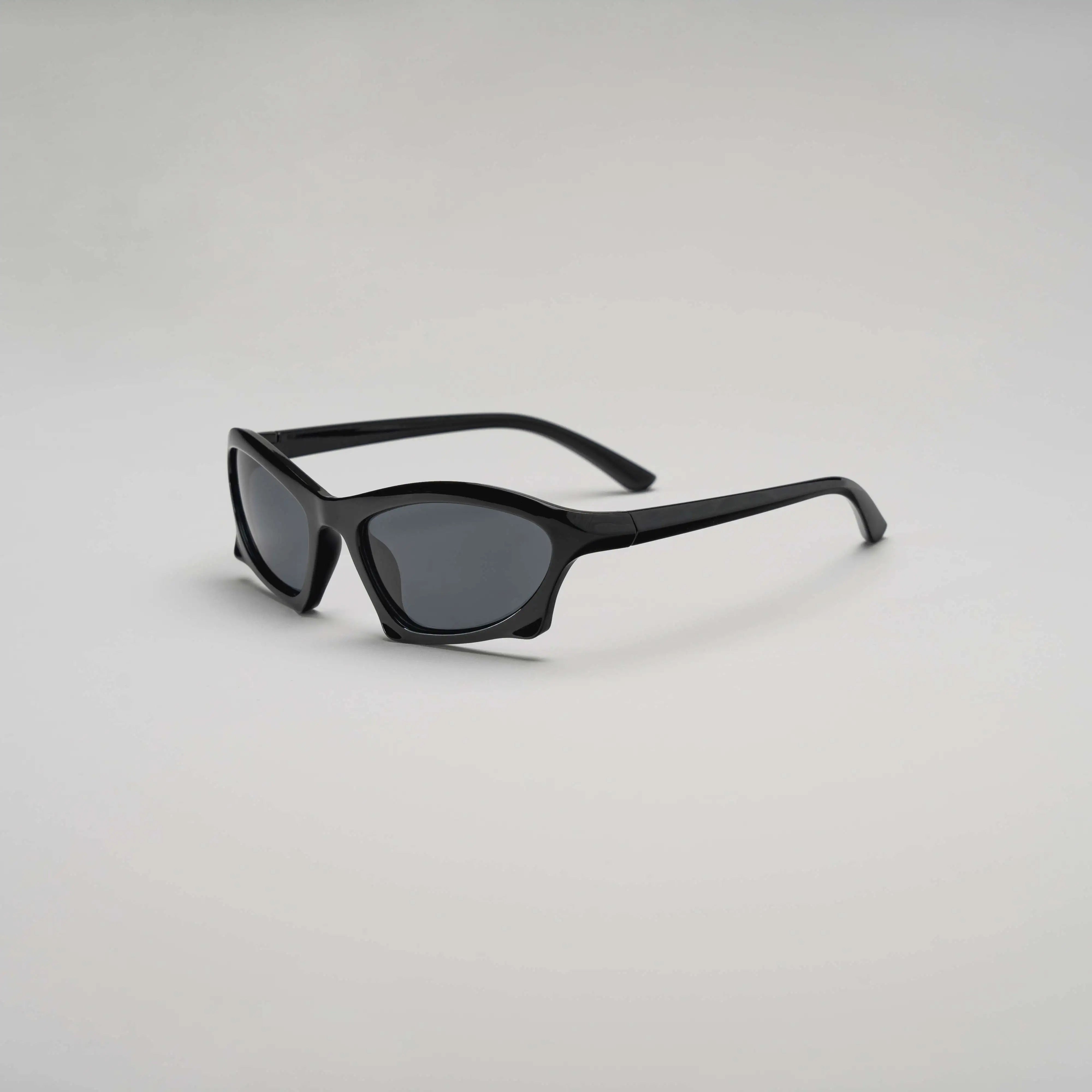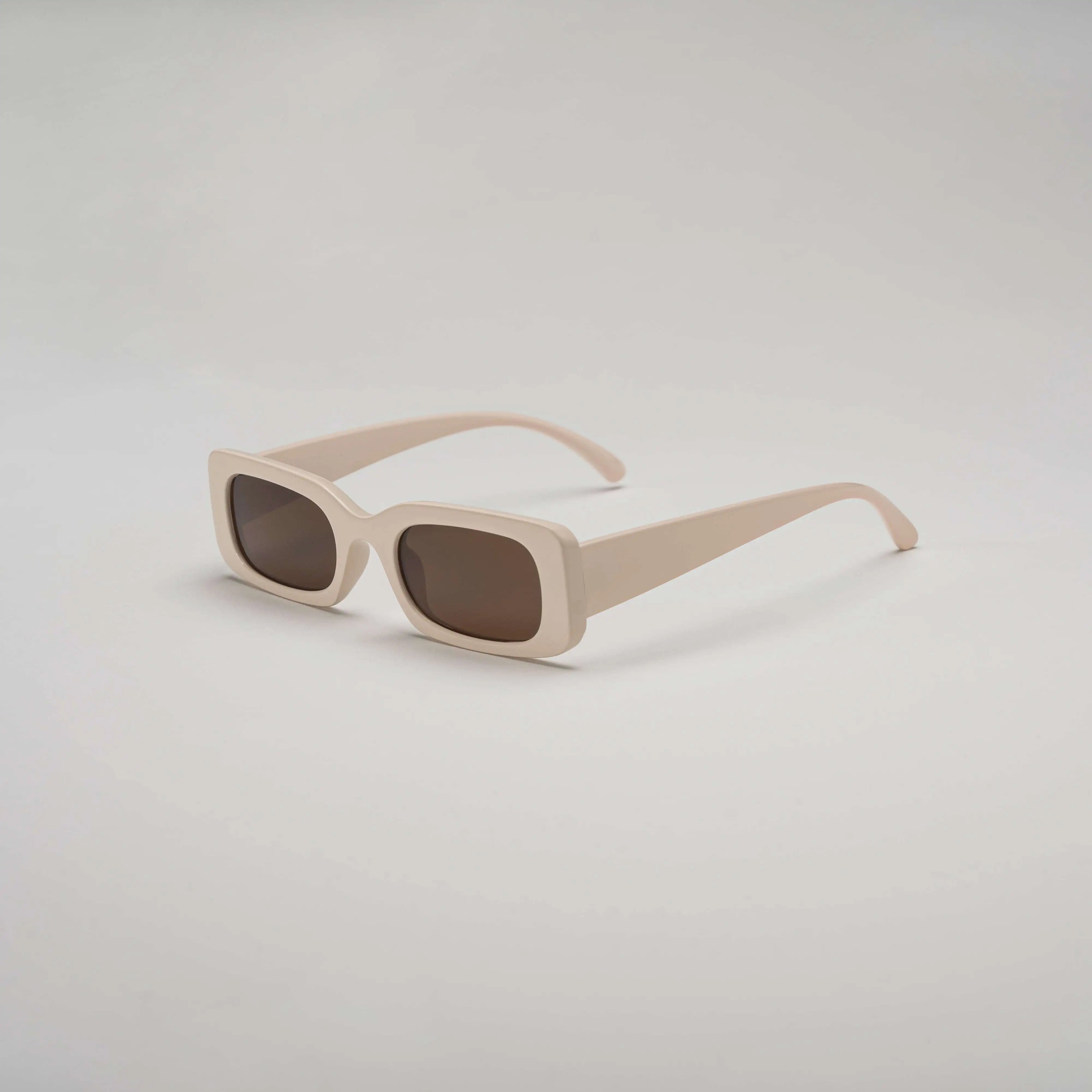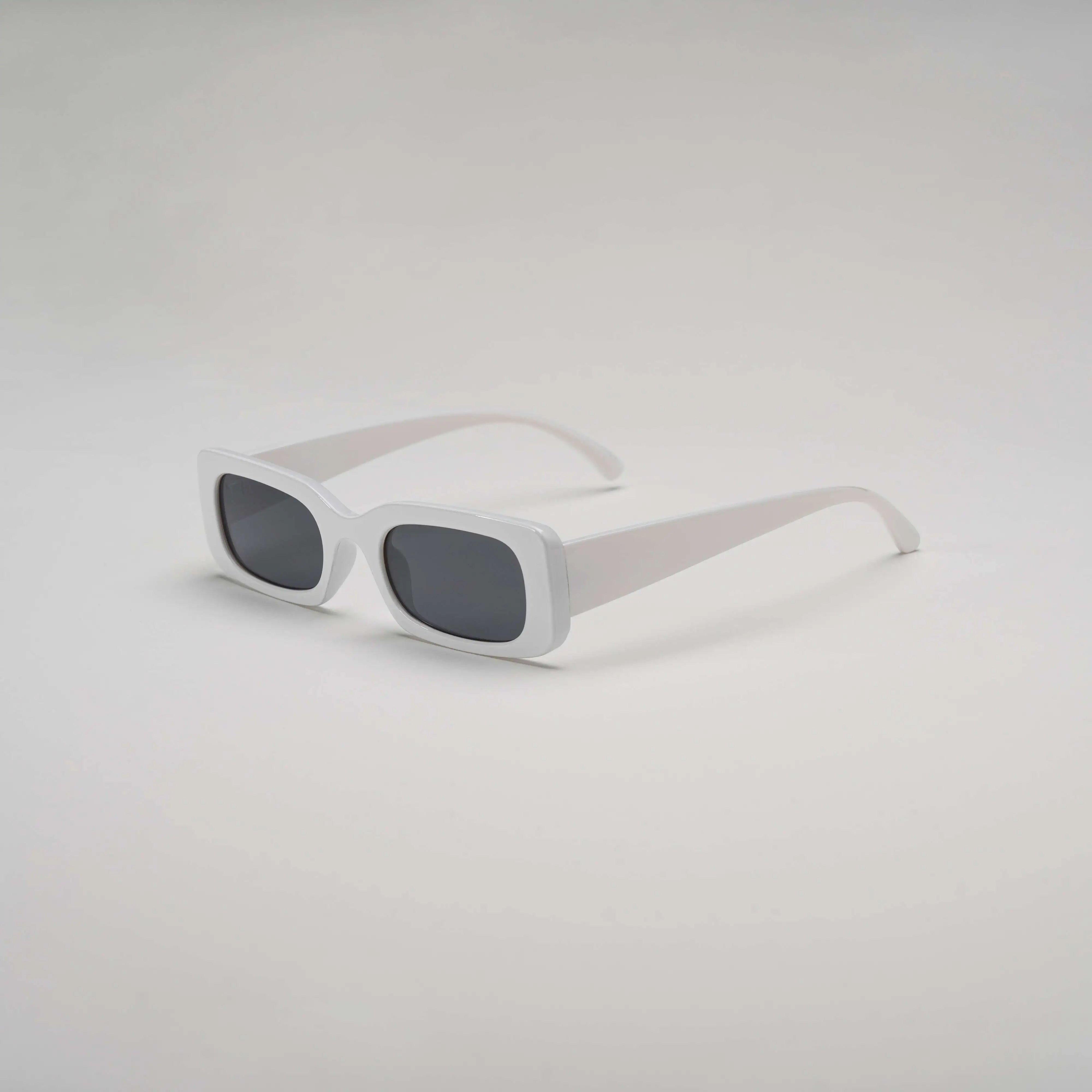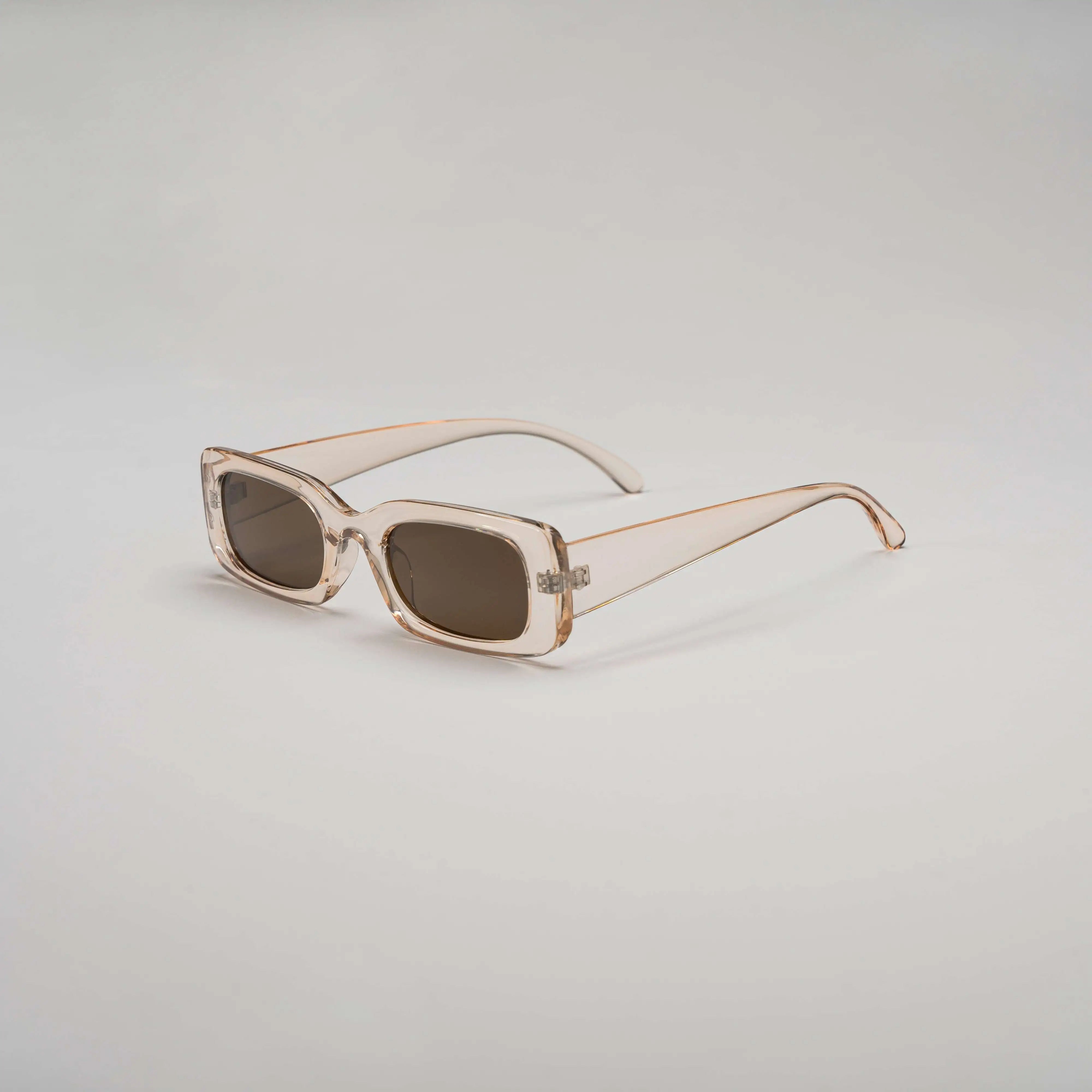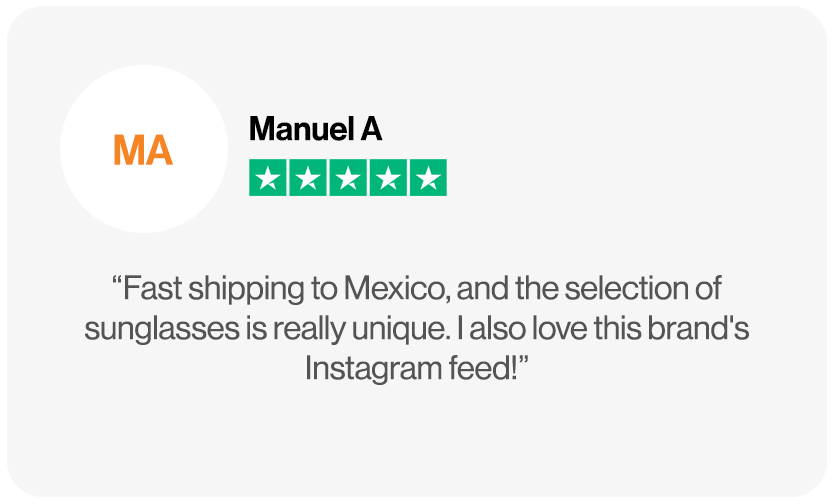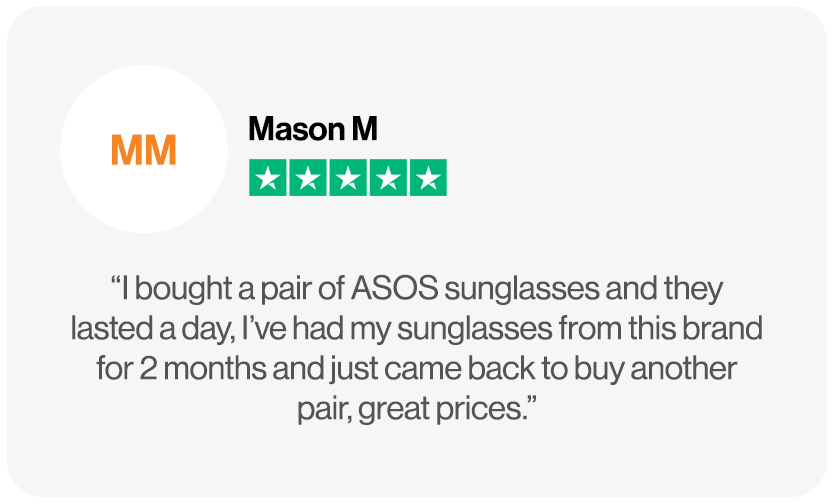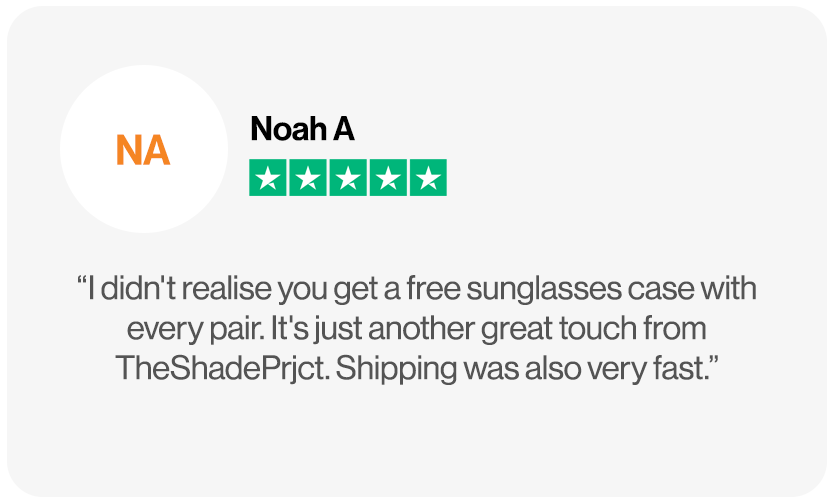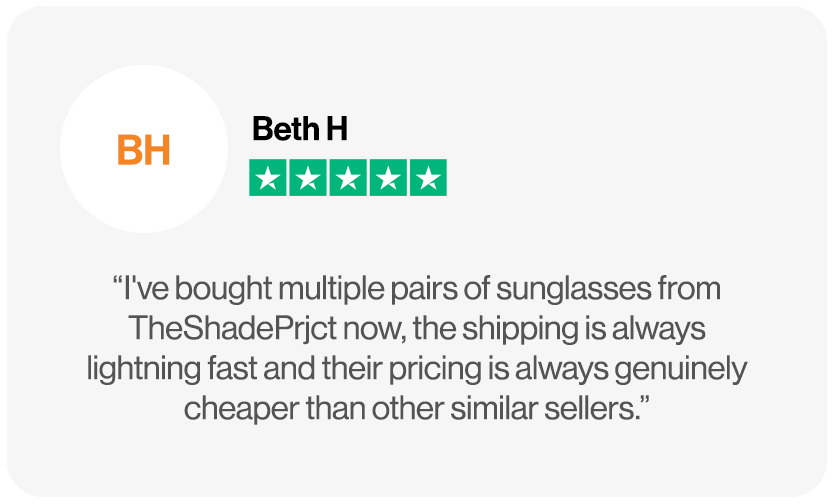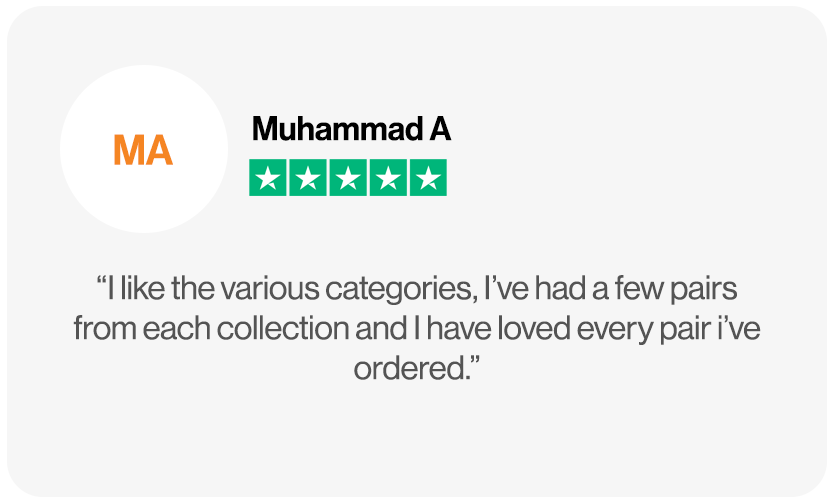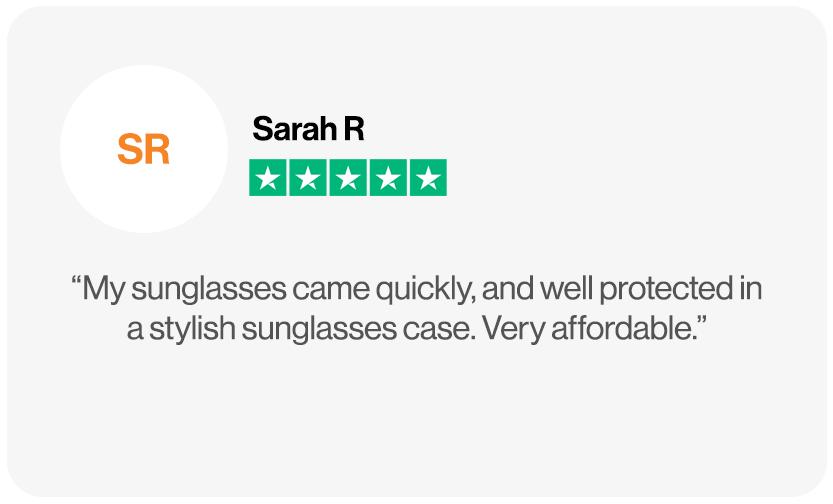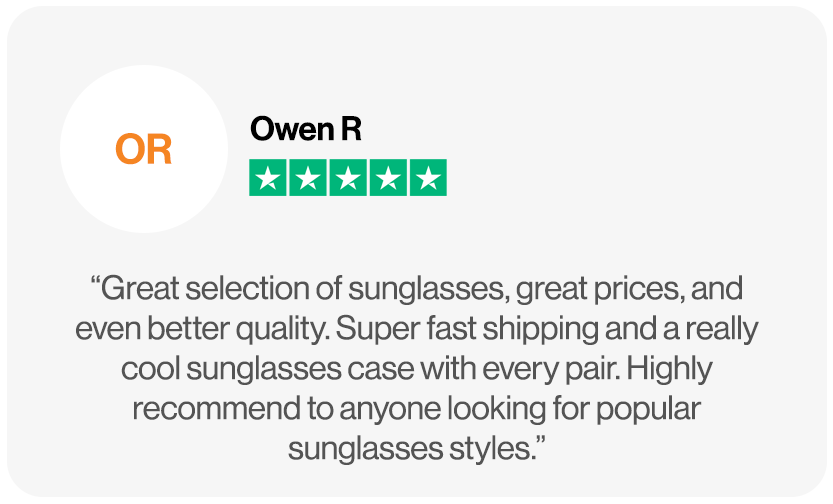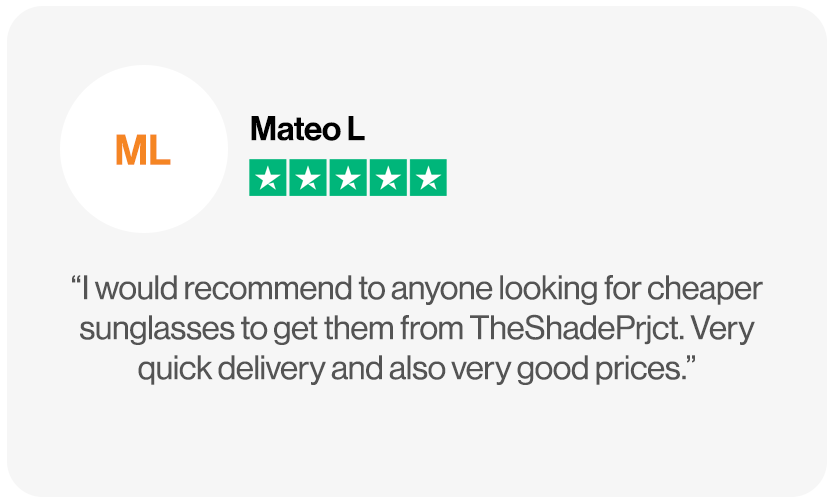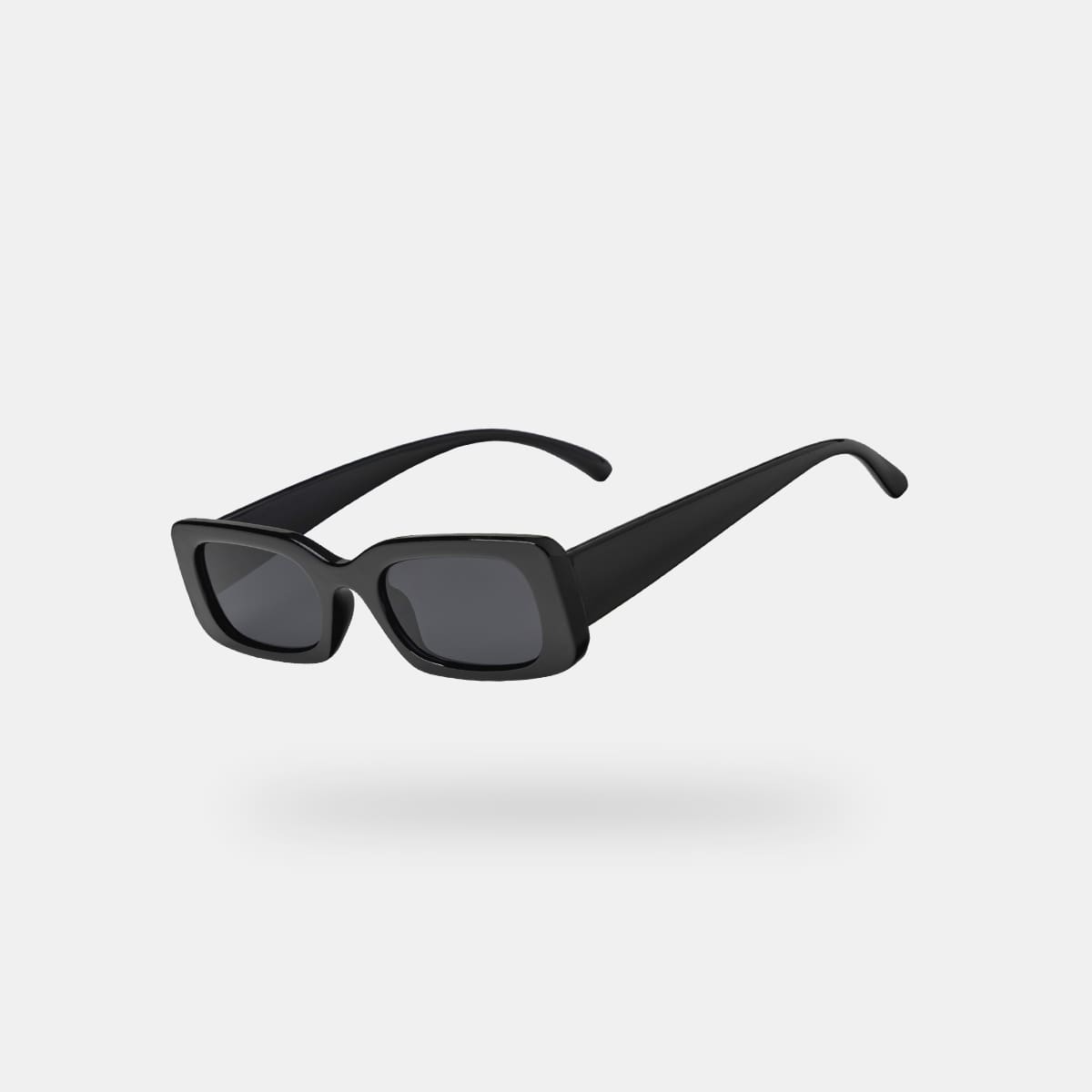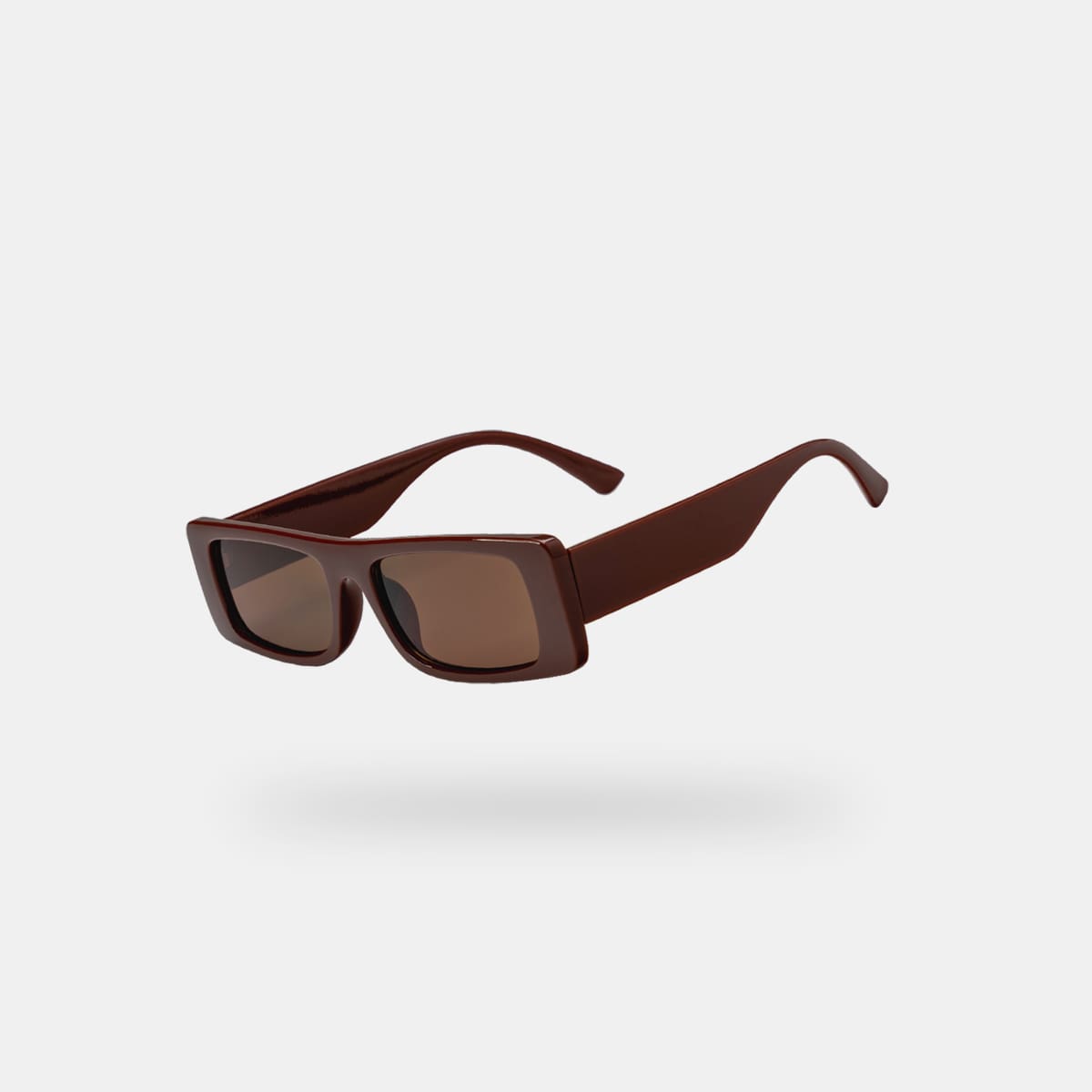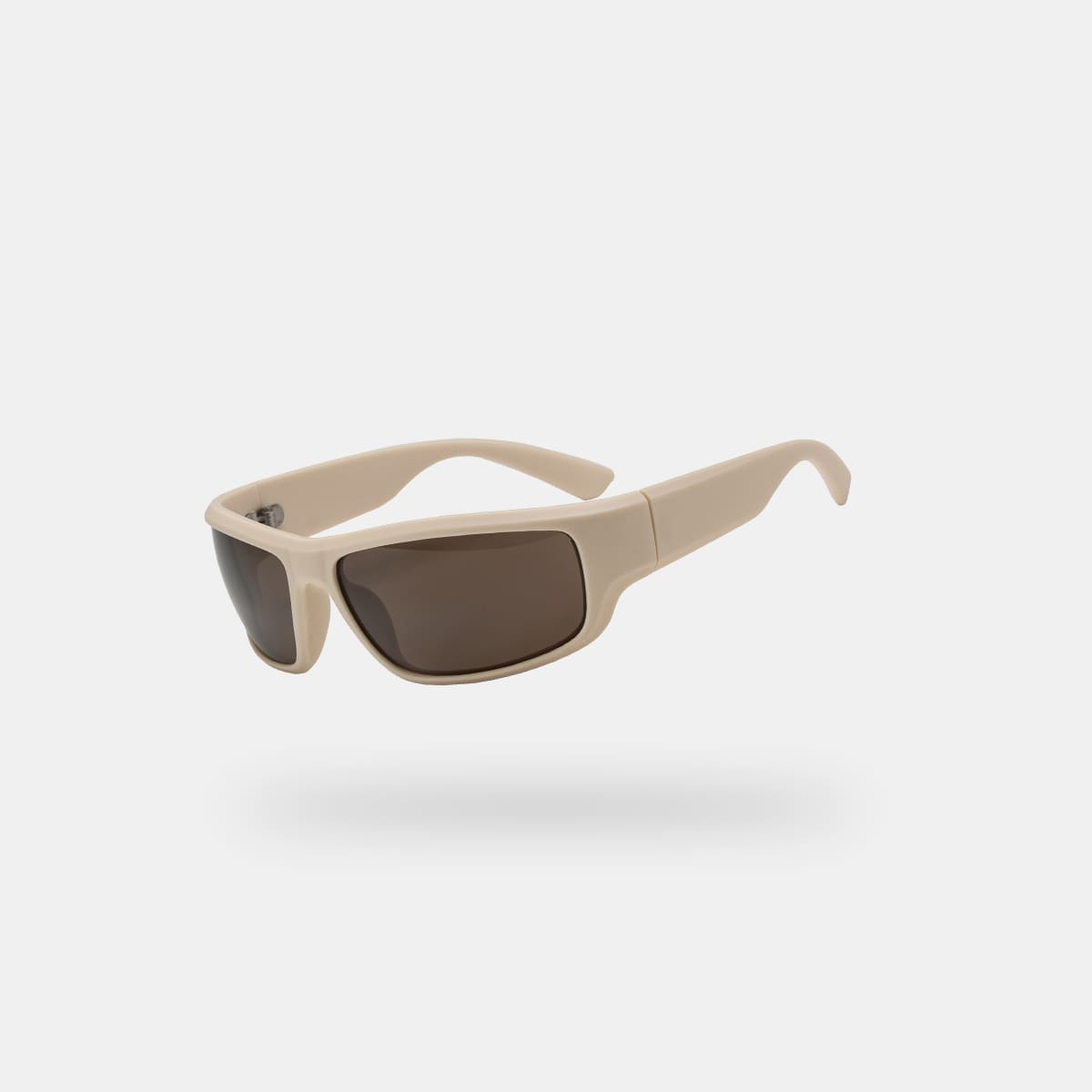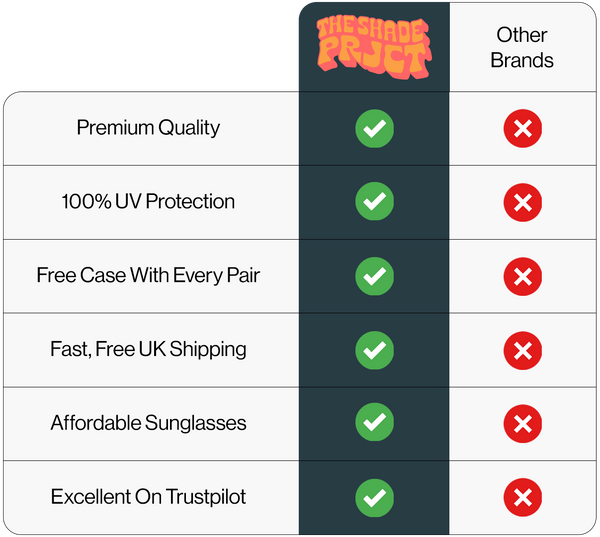The best Oakley sunglasses for men and the best Oakley sunglasses for women are more than just stylish eyewear – they’re high-performance gear trusted by athletes and casual wearers alike. Oakley has built a reputation for innovative design, durable materials, and advanced lens technology that appeals to both men and women. In this comprehensive guide, we’ll explore the top Oakley sunglasses for men and women, answer common questions about Oakley quality, lens features, pricing, and compare Oakley vs. Ray-Ban. By the end, you’ll have a clear understanding of what makes Oakley sunglasses special and which pair might be perfect for you.
The Best Oakley Sunglasses For Men
Oakley’s men’s lineup features rugged frames and cutting-edge lenses designed for active lifestyles. The best Oakley sunglasses for men combine style with functionality – offering comfort, durability, and protection. Below we highlight five top-selling Oakley styles for men, each with unique features and widespread popularity.
1. Oakley Holbrook

The Holbrook is an Oakley icon and arguably the brand’s most popular style (framesdirect.com). It sports a classic rectangular shape inspired by vintage Wayfarer designs, with a keyhole bridge and metal rivet accents on the frame. Made of lightweight O Matter™ plastic, the Holbrook provides all-day comfort. It often comes with Oakley’s Prizm™ lens technology for enhanced colour and contrast, and is available with polarised lenses for glare reduction. Beloved for its versatile look and high performance, the Holbrook remains one of the best Oakley sunglasses for men year after year.
2. Oakley Flak 2.0 XL

A top pick for athletes, the Flak 2.0 XL is a semi-rimless sport frame delivering superior coverage and secure fit. The “XL” indicates slightly taller lenses for expanded field of view. Its wraparound O Matter frame and Unobtainium® rubber nose pads/ear socks keep it in place during running, cycling, or golf. The Flak 2.0 XL meets high-velocity impact standards (ANSI) for safety (outdoorequipped.com), so it’s built tough. Optional Prizm lenses (e.g. Prizm Golf, Prizm Road) enhance contrast for specific sports, and photochromic lens versions are available that automatically darken in bright light. This combination of protection and clarity makes the Flak 2.0 XL one of the best Oakley sunglasses for men who lead an active lifestyle.
3. Oakley Fuel Cell

The Fuel Cell is a modern wraparound style that exudes a cool, sporty vibe. Oakley took the aggressive full-frame design of their classic Gascan and refined it into the slightly larger Fuel Cell. The result is a go-anywhere pair of sunglasses that looks just as good at a backyard tailgate as it does on a mountain bike trail (framesdirect.com). The Fuel Cell’s O Matter frame is lightweight yet sturdy, offering superior side coverage to block wind and sun. Many models feature polarised and Iridium™ coated lenses for glare reduction. With its blend of urban style and athletic performance, the Fuel Cell is often cited among the best Oakley sunglasses for men who want one pair that can do it all.
4. Oakley Radar EV Path

When it comes to high-performance sports eyewear, the Radar EV Path leads the pack. This is a shield-style lens design favored by cyclists, runners, and baseball players for its uninterrupted field of vision and aerodynamic shape. The single oversised lens (with “EV” for extended view) provides excellent coverage, especially in the upper peripheral region – great for cycling in a head-down position. The Radar EV features interchangeable lens capability (with options like Prizm Road, Prizm Trail, etc.), and the durable frame has adjustable nosepieces for a custom fit. Oakley’s Plutonite® lens material filters 100% of all UVA, UVB, and UVC rays (outdoorequipped.com), so your eyes stay protected. With its pedigree as a piece of sports equipment, the Radar EV Path is one of the best Oakley sunglasses for men serious about performance and protection.
5. Oakley Sutro

A newer addition that quickly became a favourite, the Oakley Sutro offers a bold twist on cycling sunglasses that’s also street stylish. It features a large shield lens design that gives cyclists a “bold and versatile look” on and off the bike (oakley.com). The Sutro’s oversised Prizm lens provides excellent coverage and striking urban style – you’ll see them worn by pro cyclists and trendsetters alike. Despite the large lens, the frame is lightweight O Matter and comfortable for all-day wear. The Sutro comes in multiple variants (the semi-frameless Sutro Lite, the smaller Sutro S) to fit different face sizes. If you want sunglasses that make a statement while still delivering Oakley’s renowned lens tech, the Sutro is one of the best Oakley sunglasses for men to consider.
The Best Oakley Sunglasses for Women
Oakley’s women’s collection blends fashion with function, offering feminine twists on the brand’s sport heritage. The best Oakley sunglasses for women deliver style, comfort, and the same advanced optics Oakley is known for – tailored to female preferences in size and design. Here are five top-selling Oakley styles for women and why they’re so popular:
1. Oakley Feedback

The Feedback is an elegant teardrop aviator designed “for the woman on the go who loves timeless style” (sportrx.com). It features a mixed-material frame with a lightweight C-5™ alloy front and acetate ear stems, giving it a premium feel. Women especially love the Feedback’s comfort features: no-snag nose pads that won’t pull your hair when resting on your head, and Unobtainium grip on the ear tips for stability (sportrx.com). The classic pilot shape flatters many face shapes, and it’s available in chic colourways like Rose Gold (shown above) and tortoise. With its blend of fashion and function, the Feedback is often hailed as the best Oakley sunglasses for women who want performance without sacrificing style.
2. Oakley Split Time

Marrying high-fashion with high-function, the Split Time is an innovative take on the classic aviator for women. It uses a combination frame (O Matter lower rims and upper stainless alloy) to create a stylish mixed-media look (sportrx.com). Designed for versatility, the Split Time has hat-compatible temples (they won’t snag or push on a baseball cap) and Unobtainium nose pads to prevent slipping (sportrx.com). The lenses come in gradient tints and even Prizm polarised options, balancing fashion-forward aesthetics with Oakley’s clarity. Whether you’re driving, at the beach, or out on the town, the Split Time provides a sleek, feminine spin on sport sunglasses – definitely among the best Oakley sunglasses for women who want it all.
3. Oakley Spindrift

For those who prefer a round lens shape, the Spindrift delivers a perfect mix of retro and modern. This O Matter frame has a subtly rounded, cat-eye silhouette that adds a touch of glamour to an active-ready design (sportrx.com). The Spindrift is ultra-lightweight and features Unobtainium™ nose pads and textured inner temples for extra grip during activity. Many women love the Spindrift’s unique lens shape that stands out from typical sport sunglasses. It’s available in fun colours (like Polished Black with Prizm Black, or Transparent Violet with Prizm Grey) to match your style. As a durable everyday pair or a chic workout accessory, the Spindrift ranks among the best Oakley women’s sunglasses for its comfort and flair.
4. Oakley Top Knot

The Top Knot is a “fashion-forward frame made for women on the go”, bringing a bold lifestyle design into Oakley’s lineup. It has a flattering oversised round-cat-eye shape that provides plenty of coverage. Despite its stylish appearance, the Top Knot is packed with functional details: no-slip, no-snag nose pads that won’t get tangled in your hair and flexible spring hinges for a comfortable fit (even on larger heads). This model often comes with gradient or Prizm lenses that add to its high-fashion appeal. If you’re looking for sunglasses that blend runway style with Oakley’s signature comfort, the Top Knot is an excellent choice and definitely one of the best Oakley sunglasses for women who want a trendy look.
5. Oakley Frogskins

Originally launched in the 1980s, the Frogskins are a unisex classic that have seen a resurgence, especially among women who love their retro vibe. Oakley “resurrected the original tooling from the ’80s” for the Frogskins, giving new generations a chance to own this piece of history (oakley.com). The latest Frogskins feature the iconic semi-square lenses with a slightly softer, rounded edge – an update that adds to its feminine appeal. Available in a huge array of fun frame colours (from crystal pink to matte black) and Prizm lens tints, Frogskins let you express your personality. They’re lightweight, comfortable, and absolutely street stylish. Thanks to their universal fit and vintage cool factor, Frogskins remain one of the best Oakley sunglasses for women (and men alike), proving that good design is truly timeless.
Are Oakley Sunglasses Cheap?
In general, Oakley sunglasses are not considered “cheap” – they are a premium eyewear brand with prices to match. A typical pair of Oakleys ranges from around £100 up to £400 or more depending on the model and lens options (outdoorequipped.com). For example, at retail an Oakley Holbrook with standard lenses might cost around £149, while a polarised version can be over £200. This pricing reflects Oakley’s high-end materials and technology. Compared to budget sunglasses or lesser-known brands, Oakley is significantly more expensive. One eyewear comparison notes that Oakleys are costlier than even other mid-range brands (e.g. starting around £68–£149 for Oakley vs. £25–£35 for O’Neill) (feelgoodcontacts.com).
However, many consumers feel Oakleys justify their price through quality and longevity. Oakley uses patented lens and frame technologies that cheap knockoffs lack. Enthusiasts often comment that their Oakleys have lasted for many years of heavy use, making them a worthwhile investment. For instance, one customer noted that while Oakleys are expensive, his pair “lasted over 20 years” of daily outdoor wear (amazon.in). The brand’s durability, performance in harsh conditions, and “trendy styles and functional wear” lead fans to argue they are worth the money despite the high cost (feelgoodcontacts.com).
It’s also worth noting that you can find Oakley sunglasses at reduced prices via sales, outlets, or the Oakley Standard Issue program (for military/law enforcement), which offers discounted pricing. But at full retail, Oakley sunglasses are a premium product, not a budget buy. In short: Are Oakley sunglasses cheap? – No, not by most standards. They are an upscale brand, priced for the advanced quality and name recognition they provide.
Are Oakley Sunglasses Good?
Oakley has a strong reputation for quality and performance, so the short answer is yes – Oakley sunglasses are very good. They are widely regarded as some of the best in the industry for several reasons:
- Optical Quality: Oakley’s High Definition Optics (HDO) ensure crisp, clear vision with no distortion across the lens. Their lenses are made of Plutonite® (a high-grade polycarbonate) that filters 100% of UV rays (outdoorequipped.com). Many models feature Prizm™ lens technology, which is praised for enhancing colours and contrast, giving “unmatched visual clarity” especially in specific environments (feelgoodcontacts.com). Users often report that looking through Oakley lenses is sharper and more comfortable on the eyes compared to cheaper sunglasses.
- Durability and Impact Resistance: Oakley frames and lenses are engineered to take a beating. Every pair is tested to exceed ANSI high-velocity impact standards – meaning the lenses won’t shatter if struck by flying objects or dropped. In the Oakley “O Lab,” the company has famously shot steel ball bearings at their lenses and dropped heavy weights on them to demonstrate this toughness.). The result: Oakley lenses resist shattering, keeping your eyes safe (unlike ordinary sunglasses that might crack and cause injury. The frames, often made from O Matter™ nylon, are lightweight but incredibly flexible and strong. Athletes from cyclists to military personnel trust Oakleys for eye protection in intense conditions. As one article put it, Oakley frames can take a beating like Muhammad Ali – which is high praise for their toughness.
- Comfort and Design: Oakley’s Three-Point Fit system ensures the glasses only touch the nose and sides of your head, eliminating pressure points. Many models include Unobtainium® components that increase grip as you sweat, so the glasses stay put. These design details mean Oakleys are comfortable for all-day wear and active use. Oakley also offers a huge range of styles, from sporty wraps to casual lifestyle frames, so wearers can find a design that looks and feels great. The brand is known for blending fashion with function – their women’s sunglasses “effortlessly blend stylish frames with cutting-edge engineering“ reflect a high-performance lifestyle”.
- Brand Trust and Social Proof: Oakley has been making eyewear since 1984 and has over 600 patents (outdoorequipped.com).They’re the go-to choice for countless top athletes. For example, 52 medalists in the 2008 Olympics wore Oakley sunglasses, and superstars like Lance Armstrong, golfers, and skiers have sported Oakleys in competition. This kind of pedigree is strong social proof of quality. Additionally, consumer reviews are generally positive – owners often comment on the noticeable quality difference in Oakley sunglasses vs cheaper pairs, citing things like better comfort, no headaches, and long product life.
All these factors contribute to Oakley’s image of quality. Of course, “good” can be subjective – some might find the styles too sporty or the prices too high – but objectively in terms of materials and performance, Oakley sunglasses are top-notch. They are designed for comfort, style, durability, and clarity of vision, and many assert that “no other brand can compete” on all these fronts. So if you’re wondering “Are Oakley sunglasses good?”, the answer from experts and users alike is a resounding yes.
Are Oakley Sunglasses Polarised?
Oakley offers a wide array of lens options, and many Oakley sunglasses are available with polarised lenses, though not all by default. Polarised lenses are designed to cut glare – especially reflective glare from surfaces like water, snow, or pavement – making them popular for fishing, boating, driving, and general bright-light use. Oakley’s polarised lenses (often marketed as HDPolarised) are high quality, eliminating 99% of glare without the haze or optical distortion that can come with some lesser polarised lenses.
When you shop for Oakleys, you’ll often see each frame comes in multiple lens variants, some polarised and some non-polarised. For example, the classic Holbrook model can be purchased with standard Plutonite lenses or upgraded to Prizm Polarised lenses. The cost to add polarisation is usually higher. Polarised Oakley sunglasses typically cost more than their non-polarised counterparts – the price difference can be around £20–£60 extra, depending on the model and lens tech. As an illustration, the Oakley Holbrook XL with Prizm Black (non-polarised) might retail around £149, whereas the Holbrook XL with Prizm Black Polarised lists closer to £200+. Retailers sometimes offer sales – for instance, a polarised Holbrook might be on sale for £159 (down from £200)– but generally polarisation is a premium feature.
Polarised Oakley lenses are very popular in styles like the Oakley Split Shot (a fishing-oriented frame that by default comes polarised) and many of the Prizm Daily or Prizm Maritime lenses. Oakley even makes Prizm Polarised lenses that combine the contrast enhancement of Prizm with polarisation for glare – giving you the best of both worlds.
It’s important to note that not every Oakley lens is polarised. Some sports use cases (like downhill skiing or aviation) actually prefer non-polarised because polarisation can make it harder to see certain instrument displays or icy patches. Oakley’s Prizm Field lenses for baseball, for example, are not polarised because athletes want to see subtle differences in terrain or ball texture without polarisation filtering that out. Oakley gives users the choice: many frame styles have both polarised and non-polarised options. The product description will indicate if a lens is polarised.
In summary, Oakley sunglasses can be polarised if you choose – and these options are widely available but usually a bit more expensive. If glare reduction is important to you (for driving, fishing, beach, etc.), it’s worth investing in Oakley’s polarised lenses. They maintain the same clarity and UV protection while making bright reflections much more manageable. With frequent promotions and the ability to customise lenses, you can often snag polarised Oakleys at a reasonable price. For instance, Oakley sometimes runs seasonal deals, or you might find a popular polarised model like the Holbrook on sale at select retailers. Keep an eye out, and you can get the benefits of polarisation without a huge price jump.
In short: Yes, Oakley sunglasses can be polarised, and those lenses do an excellent job cutting glare. Just be prepared to pay a bit extra for the polarised versions, unless you find a good deal.
Are Oakley Sunglasses Shatterproof?
One of Oakley’s hallmark features is the impact resistance of their lenses – in fact, Oakley sunglasses are often described as “shatterproof,” at least under most normal (and some extreme) conditions. While no lens is completely indestructible, Oakley’s Plutonite polycarbonate lenses are extremely tough to shatter. They are tested against high-speed and high-mass impacts as mentioned earlier, and they exceed the ANSI Z87.1 industrial impact standards for optical eyewear. This means Oakley lenses can withstand projectiles and blunt force that would shatter ordinary glass or cheap plastic lenses.
In practical terms, if you drop your Oakleys or take a direct hit from a small object (like a rock kicked up while biking, or a ball to the face), the lenses are very unlikely to crack or break. Oakley famously demonstrated this with their “Oakley HDO” tests: firing steel ball bearings at the lenses and dropping a 2-pound metal spike from several feet up – the lenses survived without shattering (gizmodo.com). In the Gizmodo report on Oakley’s testing lab, they note that Oakley lenses are “resistant to shattering if something strikes them, unlike other sunglasses that’ll happily embed shards of themselves in your eyes when hit.” This gives a good idea of the safety advantage Oakleys provide.
It’s worth noting that while the lenses don’t shatter, they can scratch or chip under severe stress. And the frames can sometimes break under extreme force (though Oakley’s O Matter frames are also very durable and flexible). But the key point is that Oakley lenses won’t send sharp pieces flying into your eyes upon impact – they tend to stay intact or at worst crack in a safe manner. This is a huge benefit for anyone using sunglasses in hazardous or active situations. In fact, certain Oakley models like the SI M-Frame and Det Cord are officially safety rated and used as protective eyewear in military and industrial settings (outdoorequipped.com).
So, are Oakley sunglasses shatterproof? For all intents and purposes, yes – Oakley lenses are shatter-resistant to a very high degree. They are one of the safest sunglasses you can wear in terms of eye protection. Many people have stories of Oakleys saving their eyes in accidents (for example, a cyclist in a crash whose Oakley lenses took the impact instead of his eyes, and survived). While we wouldn’t recommend testing them to destruction, you can have confidence that Oakley sunglasses won’t easily shatter on you. It’s this combination of impact protection and optical clarity that make Oakleys popular not just for style, but as “eye armour” for those who need it (oakleyforum.com).
Oakley Sunglasses vs Ray-Ban – A Comparison
Oakley and Ray-Ban are two titans in the sunglasses world, each with a distinct identity. If you’re torn between them, it helps to compare price, quality, design, demographics, and use cases side by side. Below is a detailed chart highlighting how Oakley sunglasses stack up vs. Ray-Bans:
As you can see, Oakley vs. Ray-Ban isn’t about one being “better” overall – it’s about what suits your needs and style. If you prioritise cutting-edge lens technology, safety, and a sporty aesthetic, Oakley might be the better choice (Oakley even markets their eyewear as “eye-armour” for your high-performance lifestyle (blog.opticalh.com). On the other hand, if you love timeless fashion, slick styling, and the heritage of a brand worn by rock stars and pilots, Ray-Ban is hard to beat.
In terms of lens performance, both offer polarised and 100% UV protective lenses. Oakley’s Prizm vs Ray-Ban’s Chromance or classic G-15 lenses each have their own advantages, but both brands will give you high optical quality. Some users note Ray-Ban’s glass lenses might resist scratches better, whereas Oakley’s polycarbonate lenses handle impacts better (thesunglassfix.com).
A common sentiment from wearers: “Ray-Ban is great for something classic… but Oakley has great Prizm lenses for performance.” (reddit.com) It really boils down to personal preference. Many people actually own both – perhaps a pair of Oakley Flak 2.0 for cycling and a pair of Ray-Ban Wayfarers for going out.
Bottom line: Oakley and Ray-Ban are both high-quality, and their prices are similar at the baseline (revantoptics.com). Choose Oakley if you value sports function, modern looks, and bulletproof build. Choose Ray-Ban if you value classic style, a legacy look, and all-purpose fashion wear. You can’t really go wrong with either – it’s more about which style resonates with you and your intended use.
Oakley Sunglasses Lens Replacement
Over time, sunglasses lenses can get scratched or you might want a different tint – the good news is Oakley sunglasses offer lens replacement options for many of their models. Oakley designs a lot of its sunglasses with interchangeable or replaceable lenses, recognising that lenses often need an upgrade before frames do.
How does lens replacement work? It depends on the model:
- Interchangeable Lens Models: Some Oakley sport sunglasses are built for quick lens swaps. For example, the Jawbreaker has Switchlock™ technology with a lever that lets you pop lenses in and out easily (oakley.com). The Radar EV, Flak 2.0, Half Jacket, and M-Frame are other examples where you can manually change lenses by flexing the frame or using a release mechanism. These make it simple to go from, say, a dark lens to a clear lens as conditions change. If your interchangeable lenses get damaged, you can just buy a replacement lens set and install them yourself in seconds.
- Standard Models (non-swappable): For lifestyle frames like Holbrook, Frogskins, or Gascan, lenses aren’t meant to be swapped daily, but they can be replaced when needed. Oakley sells authentic replacement lenses for most current models (usually ranging from £50 to £100 depending on the lens tech). You can order lenses in your desired colour and either install them yourself or have an optician do it. Replacing typically involves flexing the frame to pop out the old lenses and snap in the new ones – Oakley’s O Matter material can handle this if done carefully. In fact, Oakley uses CAD/CAM engineering to make lens replacement simple while maintaining impact protection (oakley.com). So even though not “quick-swap” by design, it’s quite feasible.
- In-Store or Send-In Replacement: If you prefer not to DIY, you can often take your sunglasses to an Oakley store or authorised dealer for lens replacement service. Oakley’s warranty (if within 2 years and a defect) might cover lens issues, but scratches from wear and tear are not covered. However, even out of warranty, Oakley customer service may help replace lenses for a fee. Some Oakley stores stock common replacement lenses or can order them. Alternatively, Oakley has a repair program – you can contact their support and send in your frame for lens replacement (fees apply if not warranty). This ensures genuine parts and proper installation.
- Aftermarket Lenses: Aside from Oakley’s official lenses, there’s a market of third-party lens companies (like Revant, Walleva, Fuse) that make compatible lenses for Oakley frames, often at lower cost. These can be an affordable route (e.g., third-party polarised lenses for Holbrook might cost £30–£50 (revantoptics.com) vs. Oakley’s ~£80). Quality can vary, though, and installing them is on you. Using aftermarket lenses might void warranty, so keep that in mind.
In summary, replacing Oakley lenses is definitely possible and commonly done. If you scratch a lens or want to upgrade to polarised or a different tint, you don’t need to buy a whole new pair of sunglasses. Check Oakley’s website or retailers for replacement lens kits for your model. For example, you can get Holbrook replacement lenses directly from Oakley or Oakley Standard Issue (oakley.com), or pick up custom-cut lenses from a third party. Many YouTube tutorials show how to safely swap lenses on specific Oakley models if you want guidance.
Whether you do it yourself or have Oakley handle it, lens replacement can give your favourite sunglasses a fresh life. It’s a great way to customise your Oakleys too – you could put in a new Prizm lens colour to change the look and function. Oakley encourages this customisation (their Oakley Custom program even lets you build a pair with extra lenses, etc.). So feel confident that with Oakley, you’re not stuck with the same lenses forever; you have options to repair or refresh your sunglasses easily.
Are Oakley Sunglasses UV Protected?
Yes – Oakley sunglasses provide full UV protection. In fact, Oakley lenses are engineered to block 100% of all UVA, UVB, and UVC rays, as well as harmful blue light up to 400nm (outdoorequipped.com). This protection is built into the lens material (Plutonite®). Unlike some cheaper sunglasses that rely on a coating, Oakley’s UV protection is inherent in the lens, so it never wears off even if the lenses get scratched (outdoorequipped.com). This means your eyes are always shielded from UV radiation when you’re wearing Oakleys.
To elaborate: UVA and UVB are the ultraviolet rays from the sun that can cause eye damage (like cataracts or photokeratitis). UVC is mostly filtered by the atmosphere but Oakley covers that too. Oakley takes eye health seriously – every lens, whether it’s grey, brown, Prizm, polarised, clear, etc., stops UV rays completely. You don’t have to specifically look for a “UV400” sticker on Oakleys because it’s standard across the board.
Additionally, Oakley’s Plutonite lens material and optional coatings also filter out blue light (which is the visible light just beyond UV). This can reduce haze and potential long-term retinal harm from high-intensity blue light. So you’re getting broad-spectrum protection.
When you see an Oakley product description, it will usually mention “100% UV protection”. Even their lighter-tint lenses and photochromic lenses maintain full UV filtering. This is a key feature that made Oakley popular among athletes and outdoor professionals – they could trust that their eyewear isn’t just making things look darker, but is truly protecting their eyes.
In short, all Oakley sunglasses are UV protected to the highest standards. You can wear them in bright sun knowing your eyes are safe from ultraviolet rays. Just be sure any replacement lenses or prescription lenses you use in an Oakley frame are also from Oakley or otherwise certified for UV protection, to maintain that safety.
What Are Photochromic Oakley Lenses?
Photochromic Oakley lenses are lenses that automatically adjust their tint level in response to UV light. In other words, they darken in bright sunlight and lighten in low light or indoors. This gives you a versatile lens that can adapt to changing conditions without needing to swap lenses or sunglasses.
Oakley’s photochromic lenses are often labeled as “Clear to Black Iridium Photochromic” or similar. For example, Oakley offers a Clear-to-Black Iridium photochromic lens on models like the Jawbreaker, Radar EV, and Flak 2.0 XL. When there’s little to no UV (like indoors or at dusk), the lens is a nearly clear light grey with about 69% transmission. Under bright UV/sun, it darkens toward a grey-black tint around 23% transmission, or even 15% in full activation (oakley.com). Essentially it covers a range like having a pair of lightly-tinted glasses and dark sunglasses in one.
Benefits of Oakley photochromic lenses:
- You don’t have to carry multiple lenses. They’re great for activities that start in early morning or span variable weather (think cycling through tunnels or going from forest shade to open sky).
- The transition is gradual and continuous; your eyes adjust seamlessly as the lens changes.
- Oakley’s photochromic lenses still include Prizm contrast enhancements in some cases, so you get both tint adjustment and clarity boost.
- They also block 100% UV (actually, UV triggers them, so they always filter it).
Considerations:
- The change isn’t instant; it takes a bit of time (usually seconds to a minute) to fully transition. Also, they react to UV light, so in a car (where windshield blocks a lot of UV) they may not darken as much.
- They tend to be more expensive than standard lenses due to the technology.
- Not every Oakley frame has a photochromic option, but many sport frames do.
For example, a cyclist might use a Jawbreaker with photochromic lenses so that during a dim sunrise the lens is almost clear (maximising light), but as the sun intensifies, the lens darkens to a grey to protect from glare. This way, one lens works for the whole ride. Oakley’s Clear-Black Iridium Photochromic is popular for mountain biking and trail running for this reason.
In summary, photochromic Oakley lenses are an excellent solution if you frequently move between light conditions. They offer the convenience of “auto-tinting” sunglasses. You’ll see them marketed as Transitions (Oakley partnered with Transitions Optical for the tech) or simply as Oakley Photochromic. If you want ultimate adaptability, it’s worth considering photochromic lenses in your next pair of Oakleys – they essentially give you sunglasses that can handle dawn, daylight, and dusk all by themselves.
Can Oakley Sunglasses Have Prescription Lenses?
Yes, many Oakley sunglasses can be fitted with prescription lenses. Oakley is actually a leader in prescription sport sunglasses, and they offer an official Oakley Authentic Prescription program. This means you can get the same Oakley lens technology (like Prizm, polarised, etc.) in your prescription, often with the Oakley “O” logo etched in the corner to authenticate it.
Here’s how it works:
- Direct from Oakley: You can order prescription Oakley sunglasses through Oakley’s website or authorised optical dealers. They will require your eyeglass prescription and will custom-make lenses to fit the frame. Oakley offers a range of Rx lens options, including single vision, bifocal, progressive, etc., and can incorporate Prizm and polarisation. The advantage of doing it through Oakley is you get the real Oakley lenses with all the tech, made specifically for the frame for optimal clarity (using their HDO technology that maintains clarity even in wrapped lenses (sportrx.com). The result is what they call Oakley Authentic Prescription lenses.
- Through Opticians/Third-party labs: You can also take an Oakley frame to an optician and have them put in prescription lenses (either from Oakley’s lab or a third party lab). Many optical shops work with Oakley or have lens blanks that fit Oakley frames. Keep in mind, for extreme curved wrap frames, you need a lab that can do high-wrap prescriptions so that vision isn’t distorted. Not every strong prescription is suitable for very curved sports frames, but moderate prescriptions usually can be done.
- Not all models are Rx-able: Most Oakley lifestyle frames (Holbrook, Frogskins, Tie Bar, etc.) and many sport frames (Flak 2.0, Half Jacket, etc.) can accommodate prescription lenses. However, some Oakley shields (single continuous lens designs like the Radar, Jawbreaker, Sutro) generally cannot have an Rx directly in the shield. For those, Oakley sometimes provides an alternative (e.g., the Oakley Kato or Jawbone have no direct Rx option, but Oakley makes similar styles that are two-lens designs which are Rx-able, or they offer an insert for goggles). Always check if a model is “available in prescription” on Oakley’s site. Most that are will say “Prescription Available” (framesdirect.com).
- Lens customisation: If you get Oakley prescription lenses, you can often choose lens colours/tints just like non-prescription. Want Prizm Road in your Flak 2.0 with your -2.00 script? Oakley can do that. They use Digital Freeform technology to optimise the optics across the curved lens for your exact prescription, ensuring sharp vision edge-to-edge.
One thing to note: prescription Oakleys are usually expensive. You might pay £200-£500 for a pair, depending on frame and lens options, since you’re essentially buying custom lenses plus the frame. Some vision insurance plans cover part of it.
But the end result can be fantastic – you get to enjoy all the benefits of Oakley sunglasses (impact resistance, clarity, style) with your vision corrected. People who require glasses and also are active find Oakley prescription sunglasses a game-changer, as they no longer have to choose between vision or eye protection – they get both.
To summarise, Oakley sunglasses can absolutely be prescription. Whether directly through Oakley or via an optical retailer, you have a lot of choices. Just make sure the frame you like can accommodate your particular prescription (extremely high prescriptions might not be doable in very curved lenses). Oakley’s own Rx lenses will ensure you don’t lose any of the quality – “they’re Rx-able!” as Oakley marketing proudly states. So if you need vision correction, don’t shy away from Oakleys; they likely have you covered.
Are Oakley Sunglasses Waterproof?
Sunglasses, including Oakleys, aren’t “waterproof” in the sense of an electronic device – there are no electronic components to protect. Perhaps the better question is: Can Oakley sunglasses handle water exposure? The answer is yes, Oakley sunglasses are designed to withstand rain, sweat, and water without being damaged. They won’t delaminate or rust from getting wet, and many have features to perform well around water.
Here are some key points about Oakleys and water:
- Materials: Oakley frames made of O Matter plastic or titanium/etc. are corrosion-resistant. If they get wet with sweat or saltwater, it won’t harm the frame material. Simply rinse them off afterwards. The metal alloys Oakley uses (like for wire frames) are typically stainless steel or Oakley’s C-5 alloy which are also corrosion-resistant to a large degree. So water won’t cause peeling or serious damage.
- Lens Coatings: Most Oakley lenses have an oleophobic/hydrophobic coating that repels water and oils. This means water will bead up and roll off rather than smearing across the lens. As a result, rain or splashes on Oakley lenses tend not to obscure vision as much because of this non-stick property (outdoorequipped.com). If you’ve ever had cheap sunglasses where a drop of water leaves a big smudge, you’ll appreciate Oakley’s coatings that minimise that. Some models explicitly advertise “Hydrophobic™” lens coating (Oakley used to call it Hydrofobics).
- Usage in water sports: Oakley even makes models for specific water use, like the Oakley Split Shot for fishing (comes with a detachable leash so you don’t lose them in water) and Prizm Deep Water Polarised lenses for offshore fishing. These are clearly intended to get wet. Surfers and boaters often use Oakley eyewear. Just note that Oakleys do not float (unless you add a floating strap), so if you drop them in a lake, they’ll sink.
- “Waterproof” vs “Water-Resistant”: While the term waterproof isn’t commonly used for eyewear, Oakley sunglasses are effectively water-resistant. If you dunk them briefly or they fall in the pool, just retrieve them, rinse in clean water, and dry them – they’ll be fine. The only caution is to avoid prolonged soaking in saltwater or chlorinated water without rinsing, as that could eventually degrade rubber parts or coatings. But normal use around water is no problem.
- Sweat and weather: For practical purposes, Oakleys are made to handle sweaty faces and rainy rides. The Unobtainium rubber bits even get grippier when wet, as on nose pads and ear socks, so the glasses actually stick better during heavy sweating or rain – a very useful feature for athletes. And because the lenses don’t fog as easily (some models even have venting) and shed water, they’re quite adept in wet conditions.
So, if you’re asking “Are Oakley sunglasses waterproof?” because you want to use them for fishing, the beach, running in the rain, etc., you can be confident they’ll hold up. You won’t ruin them by getting them wet. Just give them a rinse in fresh water after exposure to salt or chlorine to keep them at their best.
The only scenario to avoid is extreme heat + water, like leaving them on a car dashboard in a puddle of water on a 100°F day – that could possibly affect lens coatings or warpage (but that’s an extreme any sunglass could suffer). Normal water exposure is perfectly fine. In fact, “water, sweat, or even lotion and sunscreen won’t leave spots or streaks” on many Oakley lenses thanks to their special coatings. That’s a big plus if you’re active outdoors.
In summary, Oakley sunglasses are effectively waterproof for everyday purposes – they resist water damage and even incorporate design elements to perform in wet conditions. Feel free to wear them when boating, kayaking, at the water park, or caught in a downpour. Just secure them so they don’t get lost in the depths!
Can Oakley Sunglasses Be Repaired?
Oakley sunglasses are built tough, but life happens – frames can break or parts wear out. The good news is Oakley sunglasses can often be repaired, depending on the issue, either through Oakley’s service or DIY fixes with available parts.
Here’s what you need to know about repairs:
- Oakley Warranty: First, check if your sunglasses are still under Oakley’s warranty. Oakley offers a 2-year warranty from the purchase date against manufacturing defects (oakley.com). This covers things like coating defects, hinges that fall apart prematurely, etc. It does not cover accidental damage (stepping on them, etc.) or lens scratches from normal use (oakleysi.com). If it’s a legit defect and within 2 years, Oakley will usually repair or replace the sunglasses at no cost. You’ll need proof of purchase and to contact Oakley Customer Care.
- Repair Services: If out of warranty or not covered, Oakley still offers repair/replacement services for a fee. For example, if you broke an arm (temple) on your Oakley frames, Oakley can sometimes send you a replacement temple or have you send the glasses in for repair. They maintain an inventory of spare parts for many models (especially current ones). On Oakley’s support site, they mention that all components (frames, lenses) are covered for 2 years for defects (customersupport.luxottica.com), implying they do have components to swap in. Oakley Forum (user community) indicates that even beyond warranty, Oakley service may let you purchase replacement parts like earstems, icons, or nosepieces if available (reddit.com)
-
DIY Repairs & Parts: A lot of small fixes you can do yourself:
- Replacing nose pads or ear socks (the rubber pieces) is straightforward. Oakley sells “Accessory Kits” for many models that include these parts. For instance, new Unobtainium nose pads can make older Oakleys fit like new.
- Fixing loose hinges: If a screw is loose or lost in a hinge, that can be tightened or replaced (many Oakleys use standard tiny eyewear screws). Some newer models have press-in hinge pins – Oakley or a sunglass repair shop can replace those if they fall out.
- Lens replacement we covered above – that’s a common “repair” when lenses are scratched.
- Replacing a broken arm (temple): If you can obtain the part, it often just screws or snaps on. Oakley sometimes sells frame pieces, or you might find donors/parts on eBay. For popular models like Gascan, you can find spare temples online.
- Icon or logo fell off: Oakley icons (the “O” pieces) can occasionally pop out. Those can be glued back or replaced.
There are specialty shops and websites that sell Oakley spare parts (often OEM or pulled from broken pairs). And communities like OakleyForum have guides on repairs for specific models.
- Professional Repair Services: If you have a more complex issue (like broken metal frame solder points or X-Metal Oakleys needing tune-up), there are independent repair experts. For example, some companies specialise in repairing Oakley X-Metal series (re-pinning nose bridges, etc). They can often restore older Oakleys that Oakley Inc. no longer services.
- When It’s Not Repairable: There are cases where a break is too severe or parts are unavailable (especially for very old models). In those cases, Oakley might offer you a discount on a new pair as consolation if you send in the broken pair. Oakley’s policy is not official on that, but some customers have reported getting a coupon for a new purchase when their model couldn’t be fixed. If your sunglasses are vintage or limited edition, you might have to resort to finding used parts or frames to salvage.
In conclusion, Oakley sunglasses can be repaired in many instances. Start with Oakley’s own support if you’re in warranty. If not, consider the DIY route for minor fixes using authentic parts (to maintain quality). Oakley frames are modular enough that arms, lenses, rubber, etc., can be swapped out. With a little effort, you can keep a beloved pair of Oakleys going for many years. There are also thriving communities of Oakley enthusiasts who share tips on repairs and part sources. So don’t throw out your Oakleys at the first sign of trouble – chances are they can be fixed up good as new!
Do Oakley Sunglasses Have a Warranty?
Yes, Oakley sunglasses come with a warranty. Oakley provides a 2-year warranty from the date of purchase on their eyewear products (oakley.com). Here are the key details of Oakley’s warranty:
- The warranty covers manufacturing defects in material and workmanship. This means if there’s an issue like a hinge that falls apart, a coating issue on a lens out-of-the-box, or any failure that is not due to misuse, Oakley will take care of it.
- The warranty does NOT cover damage caused by accidents, improper use, or normal wear-and-tear. For example, if you scratch your lenses badly, that’s not a defect – that’s normal wear or user damage, and it’s not covered. If you sit on your glasses and snap the frame, also not covered. Additionally, loss or theft isn’t covered either.
- To use the warranty, you typically need your proof of purchase (receipt) to show the product is within 2 years of purchase. If you bought from an authorised retailer or Oakley direct, keep that receipt or confirmation email.
- What Oakley does under warranty: Depending on the issue, Oakley may repair the item (e.g., replace a defective lens or temple), or they might replace it entirely with the same model. If that model is discontinued and can’t be fixed, they might offer a similar model as a replacement. In any case, it’s at no charge if approved as a warranty case.
- How to claim: You can contact Oakley Customer Service via their website or phone. They often will instruct you to send the sunglasses in for evaluation. If you’re near an Oakley store, sometimes the store can handle the warranty process for you. Oakley Standard Issue (for military) has its own support for warranty as well, but it’s the same 2-year period (oakleysi.com)
- One cool aspect: Oakley’s warranty on prescription lenses (if you got Oakley Authentic Rx lenses) is usually 2 years as well for any coating defects or prescription accuracy issues. And for non-sunglass products: Oakley goggles and helmets often have different warranty terms (sometimes lifetime for those, interestingly (oakleyforum.com), but that’s separate from sunglasses).
To illustrate, Oakley’s official statement: “All Oakley eyewear is warranted against breakage due to material or workmanship defect for two years from the date of purchase with a valid proof of purchase.” (oakley.com). They further clarify that scratched lenses are not covered, as that is normal wear.
Also, if you customise or alter your Oakleys (like put in unauthorised lenses), that might void the warranty. It’s best to keep them as-is if you anticipate needing warranty service.
In summary, Oakley sunglasses do have a warranty – two years for defects. It’s a solid customer assurance that Oakley stands behind their quality. If your new Oakleys have any unexpected issue, you can get help. Just don’t expect it to cover accidental damage or the effects of loving them to death over five years. For those, see the repair section above or consider insurance. But within that warranty window, Oakley’s got you covered.
Oakley Sunglasses Alternatives
Oakley is a leading name in sport and active eyewear, but they’re not the only game in town. If you’re looking for alternatives to Oakley sunglasses – particularly other brands that offer activewear or sport-style sunglasses – here are some worthy options:
- Ray-Ban: While known more for lifestyle, Ray-Ban does offer some sport sunglasses (and is under the same parent company as Oakley). Models like the Ray-Ban Wings or Predator provide wraparound styles. However, Ray-Ban’s strength is in classic fashion with good optics, if you want an alternative look with still decent build quality.
- Smith Optics: Smith is a major player in the outdoor eyewear space. They make great sports sunglasses and ski goggles. Their ChromaPop lens technology rivals Oakley’s Prizm for enhancing colour and contrast. Styles like the Smith Attack (cycling), Guide’s Choice (fishing), or Ruckus (running) are popular. Smith designs are often a bit more understated than Oakley, but very functional and high quality.
- Costa Del Mar: If you’re into fishing, boating, or beach life, Costa is a top choice. They specialise in polarised sunglasses for water environments. Costa’s 580G glass lenses have legendary clarity (though glass is heavier). They have sporty wrap frames that won’t budge and a lifetime warranty on manufacturing defects. Costa, like Oakley, isn’t cheap, but for anglers it’s a go-to brand.
- Maui Jim: Another high-end alternative, Maui Jim offers excellent polarisation and extremely clear optics, with a focus on colour accuracy and eye comfort. Their styles range from sporty wraps to casual aviators. Maui Jim sunglasses are often praised for reducing eye strain. While not as “tactical” looking as Oakley, they perform great for outdoor sports (especially around water) and have a strong following.
- Under Armour & Nike: These athletic apparel giants also have eyewear lines targeting sports enthusiasts. Under Armour sunglasses and Nike Vision sunglasses have models for baseball, golf, running, etc. They often partner with optics companies (like Zeiss or Transitions) for lens tech. If you’re already a fan of these brands, their sunglasses might integrate well (e.g., UA makes frames that fit under helmets). Quality is generally good mid-range.
- Rudy Project: This brand is huge in cycling and triathlon circles. Rudy Project sunglasses, like the Tralyx or Defender, are very performance-oriented with interchangeable lenses, adjustable everything, and superlight frames. They often look as radical as Oakleys, if not more so. Rudy’s ImpactX2 photochromic lenses are excellent for variable light. They can be on the pricey side and somewhat niche to hardcore cyclists/triathletes.
- 100% (Hundred Percent): A relatively newer brand that burst onto the scene in motocross and cycling. 100% makes bold shield sunglasses like the Speedcraft (famously worn by cyclist Peter Sagan) and the S3. These have vibrant designs akin to Oakley’s Sutro – big shields, flashy colours. The lens quality is high and geared toward sports. They’re a cool alternative if you want the newest edgy styles in performance eyewear.
- Wiley X: For a more tactical or safety-rated alternative, Wiley X is a brand to consider. They produce sunglasses and goggles that meet ANSI safety standards (like many Oakleys do) and often have a military look. Models like the WX Valor or WX Saint can double as safety glasses on the job and sunglasses off the job. They also have climate-sealed goggles for wind/dust protection (great for motorcycle riding). Wiley X lenses are impact-tested and many are available with prescription as well.
- Tifosi: If budget is a concern, Tifosi is an excellent value-oriented brand for sports sunglasses. They offer a wide range of running and cycling sunglasses typically under £80, often including multiple interchangeable lenses. While they may not have the same cachet or perhaps quite the lens sophistication as Oakley, Tifosi glasses are surprisingly good quality for the price and very popular among recreational athletes.
- Adidas & Julbo: Adidas (yes, the shoe company) has a performance eyewear line with some innovative designs (some models let you swap the whole front lens module). Julbo is known for mountaineering and trail running glasses; their Zebra photochromic lenses are awesome for changing light in mountains, and they have glacier goggles too.
Each of these brands has its own strengths. If Oakley’s style or price isn’t for you, these alternatives cover the spectrum from high-end polarisation (Maui Jim, Costa) to specialised sport performance (Rudy Project, 100%, Smith) to budget-friendly (Tifosi).
When choosing an alternative, consider what aspect of Oakley you value most and find a brand excelling in that area. For instance, need ballistic safety? Go Wiley X or Smith Elite. Want best polarisation? Maui Jim or Costa. Want cycling style? Rudy or 100%. General all-around? Smith or Nike/UA.
Oakley certainly has competition, and sometimes trying a different brand can surprise you. Ultimately, all these alternatives aim to provide comfortable, durable, UV-protective eyewear for active people, just like Oakley. It’s a matter of finding which fits your face, style, and needs best. You might even end up owning a pair from multiple brands for different activities.
Conclusion
Oakley has cemented itself as a powerhouse in the eyewear world by delivering sunglasses that excel in style, performance, and protection. In this guide, we explored the best Oakley sunglasses for men, from the timeless Holbrook to the sport-ready Flak 2.0 and Radar EV, as well as the best Oakley sunglasses for women, like the elegant Feedback and modern Top Knot. We also answered key questions that many potential buyers have:
- Price & Value: Oakleys aren’t cheap – they’re a premium product – but their quality often justifies the cost. We saw that while you pay more upfront, you get durability and tech that can last years, making them a worthwhile investment for many.
- Quality & Reputation: We learned that Oakley’s are indeed “good” sunglasses, backed by cutting-edge lens innovations (HDO, Prizm) and trusted by top athletes worldwide. Social proof from Olympians and everyday users alike vouches for Oakley’s comfort and clarity.
- Lens Technology: We clarified that Oakley offers polarised lenses for glare reduction, photochromic lenses that adjust to light, and that all Oakleys give full UV protection. If you have specific needs (like polarisation or prescriptions), Oakley has solutions available – albeit sometimes at extra cost.
- Durability: Oakley’s impact resistance is a standout feature, effectively making their lenses shatterproof under normal circumstances. We discussed how this sets them apart for safety and why so many in high-risk activities choose Oakley for eye protection. Frames and lenses are tough, and Oakley stands by their construction with a solid warranty.
- Comparisons: In comparing Oakley vs Ray-Ban, we highlighted differences in style and use-case – sporty vs classic – helping clarify which might suit different preferences. We provided a chart to easily visualise those differences in price, quality, style, demographics, and uses.
- Maintenance & Support: We covered that Oakley sunglasses are maintainable – lenses can be replaced, small parts can be repaired, and Oakley offers a 2-year warranty to back their product. So owning Oakleys is not a short-term fling; you can keep them going with some care and the available support.
- Alternatives: Finally, we looked at other brands that offer similar activewear sunglasses. From Smith to Costa to Rudy Project, there are alternatives for those who want to explore – each with their own twist.
By now, you should have a comprehensive understanding of Oakley sunglasses. We’ve navigated through top models for men and women, demystified technical questions, and even looked beyond the Oakley horizon. Whether you’re after that perfect pair of Oakley Holbrooks for everyday wear or need performance shades for your next adventure, knowledge is key to making the right choice.
Remember, the best sunglasses ultimately depend on your needs – face shape, activity, style – but Oakley’s diverse lineup means there’s a good chance they’ve “got you covered” (literally, your eyes!). And if not, you now know what other brands to consider.
We hope this guide has been helpful in your journey to find the ideal pair of shades. A Guide to Oakley Sunglasses wouldn’t be complete without reinforcing one last point: Oakley’s blend of fashion, function, and fearless innovation has kept them at the forefront of eyewear for decades. Whether you join Team Oakley or not, there’s no denying they’ve changed what we expect from a pair of sunglasses.
A Guide To Oakley Sunglasses - Frequently Asked Questions
Are Oakley sunglasses cheap?
Oakley sunglasses are generally not cheap – they are a premium brand. Most Oakleys cost between £100 to £250 or more, depending on the model and lens options. You’re paying for high-quality materials and advanced lens technology. While you can find deals or older models at lower prices, in general Oakleys are more expensive than budget sunglasses, but they offer superior durability and performance in return.
What are photochromic Oakley lenses?
Photochromic Oakley lenses are lenses that automatically change tint based on lighting conditions. They are nearly clear in low light or indoors and darken in bright sunlight (UV exposure). This means the lenses adjust from light to dark, giving you optimal vision in varying environments without swapping glasses. For example, Oakley’s “Clear To Black Iridium” photochromic lens will lighten up on cloudy days and darken under intense sun, making it very versatile.
How to get my Oakley sunglasses repaired?
To repair Oakley sunglasses, first determine the issue. For warranty-covered defects (within 2 years of purchase), contact Oakley Customer Service – they may repair or replace your sunglasses for free. For non-warranty repairs, you can order replacement parts (lenses, nose pads, ear socks) through Oakley or authorised dealers and fix them yourself. Many Oakley frames allow easy part replacement. Alternatively, some opticians or specialised repair services can fix broken hinges or frames. Always use authentic Oakley parts when possible to maintain quality and fit.
Can you get Oakley sunglasses replacement arms?
Yes, replacement arms (temples) for Oakley sunglasses are often available. Oakley sells spare parts for many of its models, and you can sometimes buy a single arm or a pair of arms. To get one, check Oakley’s website under replacement parts or contact their support. You’ll need the specific model and sometimes the colour. If Oakley doesn’t have it, third-party suppliers or marketplaces like eBay may have salvaged authentic Oakley arms. Replacing them is usually as simple as removing a small screw or popping the old arm off and attaching the new one.
What are Oakley sunglasses sizes?
Oakley sunglasses come in various sizes to fit different faces. Sizes are often indicated in the model name or by dimensions in the specs. For instance, some models have “XL” versions (e.g., Holbrook XL) which are larger, or “XS” for smaller faces. Oakley typically provides measurements like lens width, bridge width, and temple length in millimeters for each model. Additionally, Oakley’s website might list fit as “standard,” “Asian fit” (adjusted nose bridge), etc. Many popular frames have multiple size options (e.g., Frogskins vs Frogskins XS) so you can choose the one that fits best.
Are Oakley sunglasses good?
Yes, Oakley sunglasses are considered very good. They offer excellent optical clarity, 100% UV protection, and use high-quality, impact-resistant materials. Oakley’s proprietary lens technologies (like Prizm) enhance contrast and colour, and their frames are durable yet lightweight. Top athletes and outdoor enthusiasts often choose Oakley for its performance and reliability. While they are pricier than some alternatives, most users find the comfort, protection, and longevity of Oakleys to be worth it.
Are Oakley sunglasses unisex?
Many Oakley sunglasses are unisex. Oakley does market certain styles specifically toward men or women (sometimes due to size or fashion cues), but the majority of designs can be worn by anyone. Models like the Holbrook, Frogskins, and Radar are popular with both men and women. Oakley also produces women-specific models (often slightly smaller or with more feminine colourways) and larger frames for men. Ultimately, if the size fits and you like the style, it doesn’t matter if it’s labeled “Men’s” or “Women’s” – Oakleys are for everyone.
Are Oakley sunglasses shatterproof?
Oakley sunglasses have extremely impact-resistant lenses that are essentially shatterproof under normal use. Their Plutonite polycarbonate lenses meet and often exceed ANSI Z87.1 high-velocity impact standards, meaning they can withstand projectiles and drops without shattering. In tests, Oakley lenses won’t splinter into your eyes when hit by flying objects – a safety advantage over regular glass lenses. While no lens is absolutely unbreakable, Oakleys are about as close as it gets in the sunglasses world, making them a top choice for protection.
Are Oakley sunglasses made in China?
Some Oakley sunglasses are made in China, and others are made in the USA or other countries. Oakley was founded and long based in California, and many models used to be made in the USA. After Oakley was acquired by Luxottica in 2007, production became global. Today, it’s common to see “Made in China” or “Made in USA” or “Made in Italy” on different pairs. Authentic Oakleys can indeed be made in China – this alone isn’t a sign of fakes. Oakley ensures quality control across all their factories, so origin doesn’t typically affect the quality.
Are Oakley sunglasses ANSI rated?
Many Oakley sunglasses are tested to meet or exceed ANSI Z87.1 impact standards, but not all are certified ANSI rated (with official markings). Oakley’s sport and tactical lines (like Oakley SI Ballistic M-Frame) often do carry an ANSI rating and are stamped accordingly, qualifying as safety glasses. Regular Oakley sunglasses (Holbrook, etc.) use the same high-impact materials and pass Oakley’s impact tests which are at or above ANSI standards, but they may not be labeled as ANSI certified. If you specifically need ANSI-rated safety glasses for work, look for models in Oakley’s safety or SI line that have the Z87 marking.
Are Oakley sunglasses UV protected?
Yes, all Oakley sunglasses provide 100% UV protection. Oakley’s Plutonite lens material blocks 100% of UVA, UVB, and UVC rays up to 400nm. Importantly, this protection is built into the lens, not just a coating, so it never wears off even if the lenses get scratched. When you wear Oakleys, your eyes are fully shielded from harmful ultraviolet radiation, which helps prevent long-term eye damage. You can trust any authentic Oakley pair to have complete UV400 protection, regardless of lens tint or colour.
Are Oakley sunglasses impact resistant?
Absolutely. Oakley sunglasses are known for their impact resistance. The lenses are made from a polycarbonate derivative that can withstand high-velocity impacts (like flying debris, sports projectiles, etc.) without breaking. Oakley frames are also built to be tough – often using stress-resistant O Matter material. Many Oakley models go through rigorous impact testing (steel ball drop tests and more) to ensure they protect the eyes. This makes them a top choice for sports, military, and anyone who needs reliable eye protection along with sunglasses.
Are Oakley sunglasses guaranteed for life?
No, Oakley sunglasses are not guaranteed for life. They come with a limited warranty (two years from purchase for manufacturer defects). Oakley will cover issues like defects in materials or workmanship during that period. However, a lifetime guarantee is not offered. Some other brands (like certain high-end eyewear or tools) have lifetime warranties, but Oakley’s policy is 2 years. After that, any repairs or replacements are at your expense. They do build their sunglasses to last many years, but if something happens outside the warranty window, you’d need to use Oakley’s repair service or buy replacement parts/new pair.
Can Oakley sunglasses be adjusted?
Yes, Oakley sunglasses can often be adjusted for a better fit, though the methods depend on the frame material. Metal frame Oakleys (like Wire series) have adjustable nose pads and can have their temples gently bent by an optician for fit. O Matter plastic frames don’t bend with heat the way acetate frames (of other brands) do, but some have internal wires in ear stems for minor tweaks. Oakley also has models with interchangeable nose pieces or adjustable arm lengths (e.g., some sports models). Additionally, Oakley’s “Ace-Fit” temples on certain newer models are designed to be heated and adjusted by an optician. Always be cautious – if you’re unsure, take them to an eyewear professional for fitting to avoid damage.
Are Oakley sunglasses safety glasses?
Standard Oakley sunglasses are not officially classified as safety glasses (unless they are specific models from the Oakley Industrial or SI line). However, because many Oakley lenses and frames meet high impact standards, they provide a level of protection comparable to safety glasses. If you need OSHA-approved safety eyewear, Oakley does make models that are ANSI Z87.1 certified (often with “Industrial” in the name, like the Industrial M Frame). These have side coverage and markings required for workplace safety use. In summary, while most Oakleys are built strong, only certain models are actually rated and marked as safety glasses.
Can Oakley sunglasses be prescription?
Yes, many Oakley sunglasses can be made with prescription lenses. Oakley offers an official Rx program where you can get authentic Oakley prescription lenses (including Prizm and polarised options) fitted to your frames. Not every style can take an Rx (shield styles often cannot), but many popular ones like Flak 2.0, Holbrook, Gascan, and Frogskins are available in prescription form. You can order through Oakley or through optical retailers providing Oakley-authorised prescriptions. This allows those who need vision correction to enjoy Oakley sunglasses with their exact prescription built in. Just be aware it can be costly and extremely high prescriptions may have limitations.
Do Oakley sunglasses have a warranty?
Yes, Oakley sunglasses come with a 2-year limited warranty from the date of purchase. This covers manufacturing defects in materials or workmanship. If your Oakleys have an issue like a coating defect, loose hinge, etc., within two years, Oakley will repair or replace them (with proof of purchase). The warranty does not cover accidents, scratches, or normal wear and tear. You’ll need to go through Oakley customer service or the retailer you bought from to initiate a warranty claim. Always keep your receipt in case you need to use the warranty. After two years, repairs or replacements would be on you, as Oakley does not offer a lifetime warranty.

